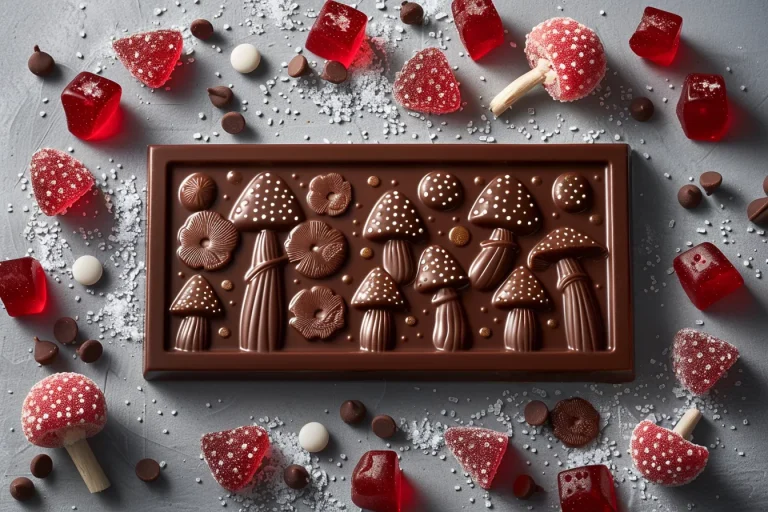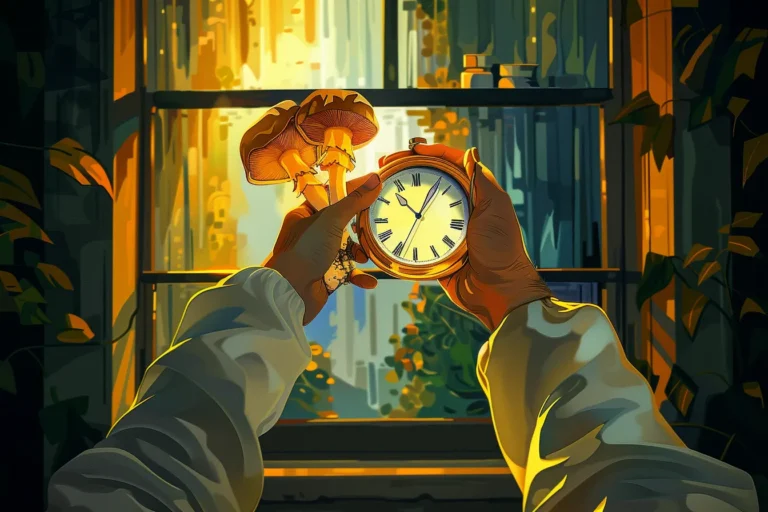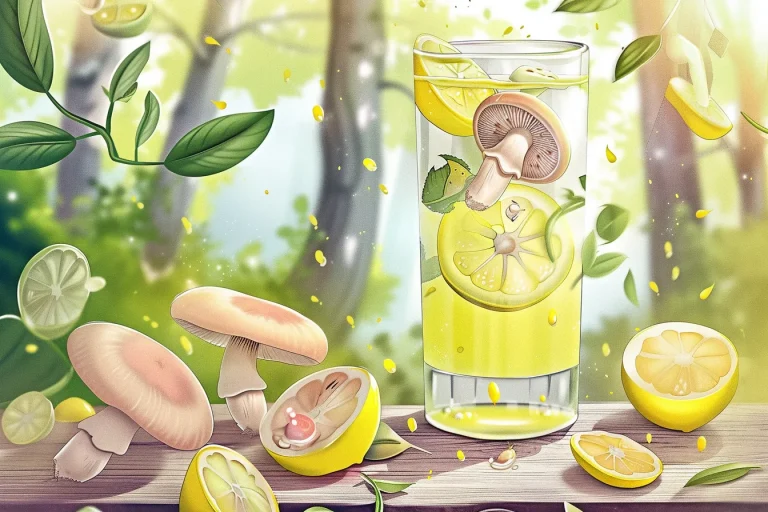Psilocybe cubensis Mushrooms, Varieties, Effects, How to Grow, and More…
Psilocybe cubensis, commonly known as “cubes” or “magic mushrooms,” is the most widely recognized psilocybin-producing mushroom. A cornerstone of the modern psychedelic movement, these mushrooms have profoundly impacted millions of lives. Culturally iconic, Psilocybe cubensis is often at the center of scientific research, depicted in both ancient and modern art, featured in mainstream branding, and celebrated in best-selling books and films.
The popularity of Psilocybe cubensis has been amplified by how easily these mushrooms can be cultivated. While they naturally thrive in tropical regions around the world, since the 1990s, Psilocybe cubensis has become much more easily cultivated by enthusiasts of all backgrounds. The internet has made knowledge more available, techniques have improved, and access to growing materials like pressure cookers for sterilizing has become easier, allowing cubes to grow in bedrooms, closets, basements, garages, and even warehouses around the world.
Numerous cultivated varieties of Psilocybe cubensis exist, each with unique physical traits and varying potency levels. These mushrooms can vary dramatically in appearance, from tiny to large, and come in a range of colors—from pure white (albino) to shades of black, yellow, brown, or gold. Such diversity has emerged from selective breeding, starting with naturally occurring wild varieties of Psilocybe cubensis as the breeding stock, cultivated over time to emphasize specific characteristics like potency, size, and color.
Psilocybe cubensis plays a pivotal role in the modern conversation around psychedelics. People are drawn to these mushrooms for recreation, connection, and their potential to heal or alleviate unwelcome symptoms. For many, an encounter with Psilocybe cubensis stimulated their first psychedelic experience—often viewed as a rite of passage or an initiation. For some, there is a profound encounter with the divine that reshapes their spiritual beliefs, while for others, a deepened connection with nature is fostered through a particularly transformative experience. (1–3)
From a therapeutic perspective, these mushrooms are gaining wider acceptance as a potential alternative to traditional treatments for various health conditions. State and local governments, led by citizen initiatives, are increasingly considering legalization and decriminalization—sometimes even writing this specific species directly into local law, as seen with Oregon’s Measure 109.
As these mushrooms continue to shape cultural and scientific landscapes, they challenge us to rethink our understanding of consciousness, wellness, and the nature of reality itself. For some, they are a tool for personal growth; for others, a catalyst for societal change, a medicine, a ritual, or a sacrament. All of these definitions capture why Psilocybe cubensis holds such significance in people’s lives today.
Key Information (1, 4, 5)
| Also Known As | Cubes, San Isidro, Gold Caps, Shrooms, Magic Mushrooms |
| Most popular strains | Golden Teachers, B+, Penis Envy, TAT |
| Psychoactive Contents | Known: psilocybin, psilocin Under investigation: baeocystin, norpsilocin, norbaeocystin, 4-hydroxy-tryptamine, aeruginascin, 4-hydroxy-trimethyltryptamine, β-carboline alkaloids, terpenoids |
| Potency | Below average to very potent, usually modest (see Dosage Info) |
| Regions Found In | Tropical to subtropical |
| Distinguishing Characteristics | Relatively large mushrooms with golden caps, rhizomorphic mycelium, blue bruising |
| Cultivation Difficulty | Easy (see How to Grow) |
| Typical Substrate | Brown Rice Flour, CVG (see How to Grow) |
Psychedelic-Effects

Generally, the psychedelic effects of P. cubensis may become perceivable within from ten minutes to one hour after ingestion, lasting three to six hours, with the most intense peak experience between one and three hours after ingestion.(10)
Psilocybe cubensis can induce a range of psychedelic effects upon consumption including (6):
The onset, intensity, and duration of these effects can vary depending on:
What you might experience, depending on how much you take: (7–9)
Microdose
Mini Dose
Medium Dose
Macro Dose
Heroic Dose
Psychoactive Properties
The psychoactive effects of Psilocybe cubensis are primarily attributed to psilocybin, a tryptamine found exclusively in fungi.(6, 10, 11) Psilocybin acts as a prodrug, converting to psilocin in the body after ingestion. Psilocin, a classic serotonergic psychedelic, binds to and activates specific serotonin receptors and functions as a psychoplastogen, reshaping neuron structure and function.
Besides psilocin, Psilocybe cubensis also contains smaller amounts of related tryptamines and trace levels of β-carboline alkaloids. (4, 12–14)
Minor tryptamines include:
While these minor tryptamines have some biological effects, current evidence suggests they do not produce psychedelic effects on their own, leaving their role in the overall psychoactivity of Psilocybe cubensis unclear.
β-carboline alkaloids present in Psilocybe cubensis may enhance the effects of tryptamines by preventing their breakdown, though it remains uncertain whether their levels are significant enough to influence the psychedelic experience. Ongoing research seeks to determine whether the experience of consuming the whole mushroom differs significantly from using synthetic psilocybin or psilocin alone.
The psychoactive effects of psilocybin can lead to immediate and lasting shifts in consciousness, influencing mood, behavior, and cognition.
These effects are being studied for potential therapeutic uses, including treatment for: (11, 15–18)
What Are the Side-Effects of Psilocybe cubensis?
Common side effects of Psilocybe cubensis use, reported anecdotally, include:(19, 20)
Physical Side Effects:
Mental Side Effects:
These mental symptoms are often described as part of a “bad trip,” and they are more likely to occur with uncertain dosages or when mixed with other substances. It’s important to remember that these side effects are temporary and typically subside over time. (20, 21)
While rare, some individuals may develop Hallucinogen Persisting Perception Disorder (HPPD), where perception distortions, like closed-eye visuals, persist for weeks to years after using mushrooms or other psychedelics.(22)
History & Cultural Significance of Psilocybe cubensis
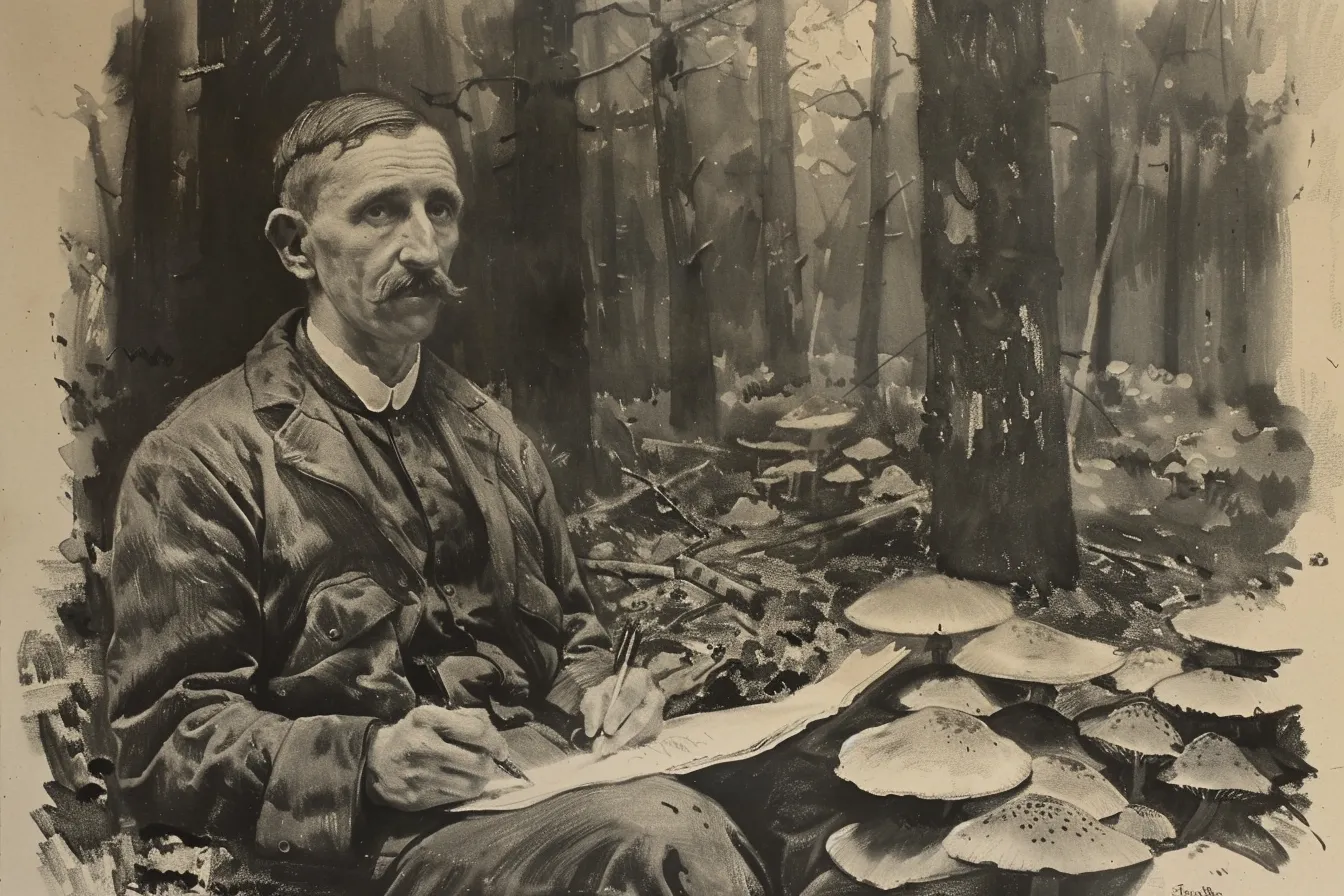
Psilocybe cubensis was first described to science in 1906 as Stropharia cubensis by American mycologist Franklin Sumner Earle, during a fungal diversity expedition in Cuba with William Alphonso Murrill. At the time, Earle was unaware of its psychoactive properties
The mushroom was described again in different regions across the world. In 1907, it was recorded in Tonkin (now northern Vietnam) as Naematoloma caerulescens, and in 1941, it was named Stropharia cyanescens in Florida. Finally, in 1949, German mycologist Rolf Singer reclassified the mushroom under the genus Psilocybe, naming it Psilocybe cubensis while retaining the original epithet “cubensis.” Singer noted the mushroom’s hallucinogenic properties after identifying it at the Harvard University Herbarium, where it was part of the collection from Richard Evan Schultes’ ethnomycological expeditions to Mexico. Schultes received Psilocybe cubensis mushrooms from indigenous people during his search for the sacred mushroom, marking the first time the Psilocybe genus had been confirmed as psychoactive.(23–26)
In Mexico, Psilocybe cubensis is often called San Isidro or San Ysidro de Labrador, named after Isidore the Laborer, the Catholic patron saint of farmers. This common name is linked to its frequent growth in cattle pastures. Despite its popularity, traditional Mexican shamans prefer other species of psilocybin-containing mushrooms for spiritual rituals, such as derrumbes (commonly Psilocybe caerulescens or Psilocybe zapotecorum) and pajaritos (Psilocybe mexicana). One reason for this preference could be that San Ysidro mushrooms grow directly from cow dung, making them seem “unclean.” However, Psilocybe cubensis is still often used in modern Mexican mushroom ceremonies to cater to the influx of tourists seeking to experience the “flesh of the gods.” (27)
In Southeast Asia, Psilocybe cubensis grows abundantly in the dung of water buffalo, cows, and elephants, leading to region-specific strains such as Pink Buffalo and Thai Elephant Dung. Other notable strains from the region include Koh Samui Super Strain, Lipa Yai, Full Moon Party, and Tak Mountain. These mushrooms are widely known among locals, who collect and offer them to tourists, often serving them in milkshakes, omelets, or pizzas to mask their bitter taste. (28, 29)
Today, Psilocybe cubensis is by far the most commonly cultivated psychedelic mushroom, both in clandestine operations and legitimate research settings. The majority of magic mushrooms available in the illicit market are Psilocybe cubensis. When scientific studies are conducted on the psychoactive effects of magic mushrooms, Psilocybe cubensis is frequently used due to its ease of cultivation when synthetic psilocybin is not employed.(5)
The Difference Between Genus, Species, Strains and Cultivar
Genus, species, and cultivars represent different taxonomic ranks, which help biologists understand how organisms are related. The genus is the highest rank, grouping closely related species. For example, in the animal kingdom, the genus Canis includes wolves, dogs, and coyotes.
Species are more closely related organisms that share distinct traits, ecological roles, or genetic similarities. Species within the genus Canis include the gray wolf (Canis lupus) and the coyote (Canis latrans), which are distinct but related.
Within a species, varieties can emerge naturally or through human cultivation. For instance, dog breeds are cultivated varieties of the species Canis familiaris. These distinctions help scientists in the field of taxonomy study relationships among organisms.(30)
In the fungal kingdom, Psilocybe cubensis is a species within the genus Psilocybe. This species has hundreds of cultivars (or cultivated varieties), such as Golden Teachers and B+. In mycology, hobbyists often use the term strain interchangeably with cultivar. (31)
List of Psilocybe cubensis Strains and Varieties
-
The majority of magic mushroom varieties today are strains created using a Psilocybe cubensis specimen that was originally collected from the wild.
-
There are hundreds of strains of Psilocybe cubensis, with new strains being continually developed. Here is a short list of some popular strains:(32)
- Golden Teacher
- B+
- Penis Envy (PE)
- Huautla
- Corumba
- Albino Treasure Coast
- True Albino Teacher (TAT)
- Mazatapec
- Oakridge
- Lizard King
- Hillbilly
- Melmak
- Avery’s Albino
- Albino Penis Envy (APE)
- Ghost
- Rusty Whyte
Where and when to Find Psilocybe cubensis Shrooms
Where Do They Grow?
What time of Year?
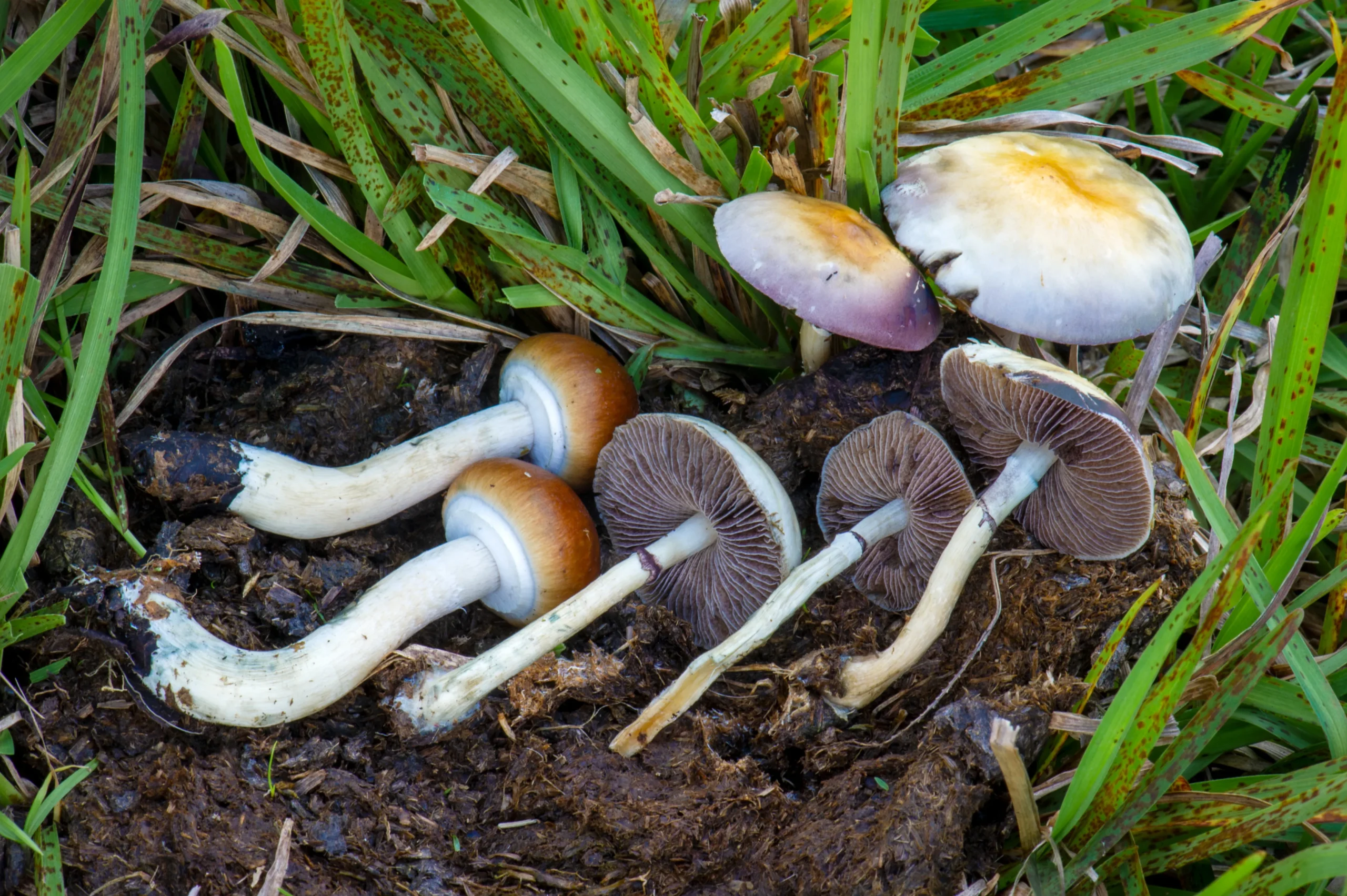
Psilocybe cubensis Mushroom Identification & Look-alikes
Psilocybe cubensis is easily recognized by its distinctive golden-brown, convex cap, which matures with a purple-brown tint from its spores. Key identifying features include:
There are several mushrooms that grow in the same habitat and may resemble Psilocybe cubensis. These look-alikes include species from the genera Agrocybe, Stropharia, Protostropharia, Panaeolus, Bolbitius, Hypholoma, Candolleomyces, Psathyrella, Conocybe, Deconica, Galerina, Leratiomyces, Chlorophyllum, and Lacrymaria. While some share traits like habitat, cap shape, or spore color, none exhibit all the defining characteristics of Psilocybe cubensis.
It’s crucial to identify multiple key features when foraging, especially for beginners. Community resources, such as local mycology societies or online platforms like iNaturalist.org or MushroomObserver.org, can help connect you with experts for proper identification.(31)
Safety Precautions & Harm Reduction Tips
For Foraging:
General Guidelines:
How to Grow Psilocybe cubensis at Home Cultivation Basics
Psilocybe cubensis can be cultivated using various methods, but the core process remains consistent: spores are introduced to a substrate where they germinate, form mycelium, and eventually produce mushrooms. One simple and popular method for beginners and experienced growers alike is the all-in-one bag method. This technique simplifies the process by combining substrate, spawn, and colonization in a single grow bag, reducing the chances of contamination and eliminating the need for complex equipment.
Materials:
Steps:
01
Sterilize and Prepare: Before inoculation, clean your work area and hands thoroughly with soap and water. Use disinfectant wipes to sanitize the bag’s injection port and your workspace.
02
Inoculation:
03
Colonization:
04
Fruiting: Once the bag is fully colonized (appearing as a solid white mass of mycelium), The temperature should be kept between 65-70°F.
05
Harvesting:
The all-in-one bag method is a simple, beginner-friendly approach that streamlines the growing process and minimizes contamination risk. It requires minimal equipment and space, making it an ideal option for those looking to cultivate Psilocybe cubensis at home with ease.
We recomend All in One Grow Bags from MushroomSupplies.com and Liquid Culture from Advanced Mycology.
Avoiding Mold & Contamination
Psilocybe cubensis is relatively mold and contamination resistant. In general, here are some things you can do to avoid contamination:
Where to Buy Psilocybe cubensis Spores Online or Locally

Distribution of potency within Psilocybe cubensis, plotted as frequency of a given potency against potency value.(42)
This chart illustrates the psilocybin equivalent concentration distribution in Psilocybe cubensis mushrooms.
Key Insights:
01
The peak of the curve occurs around 10-15 mg/g, meaning most Psilocybe cubensis mushrooms tested tend to have psilocybin concentrations in this range.
02
The distribution is positively skewed, with a long tail extending to the right. This suggests that while higher concentrations (20-45 mg/g) are possible, they occur much less frequently.
03
The highest frequency is observed at concentrations slightly above 10 mg/g, indicating that this concentration is the most common.
04
The distribution tapers off significantly after 25 mg/g, showing that concentrations above this level are relatively rare.
Potency
Wild Psilocybe cubensis mushrooms are generally modest in potency, while cultivated varieties can range from average to extremely potent, especially with the rise of highly-potent strains. Mushrooms in poor condition—those that are aged, not fully dried, or discolored—tend to have weaker effects. (43, 44)
Though most Psilocybe cubensis are average in potency, some cultivated strains rival the most potent magic mushrooms in the world. Novelty strains like Penis Envy, TAT, and Enigma often exhibit significantly higher potency, making them increasingly popular among growers.
Psilocybin and Psilocin Content
Psilocybe cubensis contains psilocybin and smaller amounts of psilocin, the primary psychedelic compounds in magic mushrooms. (34, 43, 45) Potency is often measured in milligrams per gram (mg/g) or as a percentage of mushroom weight.
Here are the typical potency ranges:
Potency can vary between individual mushrooms, even within the same batch, and the active compounds degrade over time when exposed to moisture, oxygen, heat, or light. On average, cultivated Psilocybe cubensis mushrooms contain 8 mg/g of psilocybin and 1 mg/g of psilocin.
Caps vs. Stems
The debate over whether the caps or stems of Psilocybe cubensis are more potent remains unsettled. One study found that stems are slightly stronger than caps (43) while another found caps to be twice as potent.(34) However, the differences were statistically insignificant, with more variability between individual mushrooms than between caps and stems. To ensure consistent potency, many users blend multiple mushrooms into a powder.
Enigma-Type Strains
Mutant strains of Psilocybe cubensis, such as Enigma, produce unusual coral, fin, or brain-like tissue without traditional caps, stems, gills, or spores. (46)
Enigma was the first of its kind, isolated from the TidalWave strain, and similar mutants have since emerged with varying potency and morphology. Enigma-type strains can range from modest to extreme potency, sometimes exceeding 30 mg/g of psilocybin, making them some of the most potent Psilocybe cubensis mushrooms. While not all Enigma-type strains are highly potent, their variability underscores the diverse range of potency in magic mushrooms.
Dosage: The effects at any given dose can vary from person to person. Current evidence suggests dosage is independent of body weight or BMI. Dosages are broken up into categories based on subjective intensity.(47, 48)
Psilocybin & Other Potentially Psychoactive Content:
| Compound | Concentration In Milligrams Per Gram (mg/g) | ||||||
| Low | Average | High | |||||
| Psilocybin | 1 mg/g | 8 mg/g | 32 mg/g | ||||
| Psilocin | 0 mg/g | 1 mg/g | 16 mg/g | ||||
| Baeocystin | 0 mg/g | 0.1 mg/g | 1 mg/g | ||||
Table 1. Levels of alkaloids in cultivated Psilocybe cubensis including psilocybin, psilocin, baeocystin, as well as combined alkaloid and psilocybin equivalent concentration values. Data generated by TrypLabs.(42, 44)
Dosage Chart:
| Psilocybe azurescens dosing guide | |||||||||||
|---|---|---|---|---|---|---|---|---|---|---|---|
| Sub Perceptual | Perceptual | Intense | |||||||||
| Micro Dose | Mini Dose | Medium Dose | Macro Dose | Heroic Dose | |||||||
| Milligrams of Psilocybin | 1 mg | 3 mg | 12 mg | 25 mg | 50 mg | ||||||
| Approximate grams of dry mushrooms | 0.6 mg | 0.17 mg | 0.7 mg | 1.4 mg | 2.8 mg | ||||||
Table 2. Recommended dosing guide for cultivated Psilocybe cubensis mushrooms based on psilocybin potency values. (42, 44)
Psilocybin Potency Testing and Test Kits
Generally, mushroom potency tends to be variable even within the same batch. A small difference in potency can make a big impact on experience.(34)
Testing mushrooms is recommended to inform the necessary dose.
Some analytical laboratories may offer mushroom testing in your area:
Experienced users may determine relative potency from self-administered bioassays ie. consuming a known amount of mushrooms and comparing the intensity to past psychedelic experiences.
Dosing mushrooms based on potency test result
-
When the potency of mushrooms is known, dosing can be accurately informed.
-
Determine the grams of mushrooms needed to reach the target experience using the dosage chart (table 2).
- Divide the psilocybin dose by the mushroom test result potency to determine the amount of mushrooms to consume.
- For example, if one gram of mushrooms contains 10 milligrams of psilocybin or 10 mg/g, and the target experience is a microdose of 1 mg of psilocybin, then the amount of mushroom to use is 1 divided by 10 which is 0.1 grams or 1/10th of a gram of mushrooms.
- Divide the psilocybin dose by the mushroom test result potency to determine the amount of mushrooms to consume.
Cultivated Psilocybe cubensis Potency List (Strongest to Lowest)
The majority of Psilocybe cubensis available is produced with cultivation methods, as opposed to being gathered from the wild. The potency of cultivated Psilocybe cubensis mushrooms varies greatly, even within individual strains. However, certain strains are regularly more potent than others, see the following chart to track each strain.(42, 44)
NOTES: These are 2 differnt tables I’m working on. The first one layout looks good on mobile but the search on mobile is not good as the search doesn’t show the full information. The second table is good with search but does not stack format like on mobile therefore overflows requiring users to scroll horizontally a little bit. Could you help me to choose the correct option? I will make sure to delete the unused table and this note before publishing.
| Col 1 | Col 2 | Col 3 |
|---|---|---|
| Strain | Toque (enigma-type iso) | |
| Average | 25 mg/g | |
| ± std. dev. | ±7 mg/g | |
| Min | 15 mg/g | |
| Max | 31 mg/g | |
| Samples | 4 | |
| Strain | Penis Envy Uncut | |
| Average | 22 mg/g | |
| ± std. dev. | ±5 mg/g | |
| Min | 19 mg/g | |
| Max | 27 mg/g | |
| Samples | 3 | |
| Strain | Albino Penis Envy Black #1 | |
| Average | 20 mg/g | |
| ± std. dev. | ±9 mg/g | |
| Min | 13 mg/g | |
| Max | 30 mg/g | |
| Samples | 3 | |
| Strain | Albino Penis Envy Starry Night | |
| Average | 18 mg/g | |
| ± std. dev. | ±10 mg/g | |
| Min | 5 mg/g | |
| Max | 34 mg/g | |
| Samples | 8 | |
| Strain | True Albino Teacher Black Cap | |
| Average | 18 mg/g | |
| ± std. dev. | ±4 mg/g | |
| Min | 14 mg/g | |
| Max | 22 mg/g | |
| Samples | 3 | |
| Strain | Albino Riptide | |
| Average | 17 mg/g | |
| ± std. dev. | ±5 mg/g | |
| Min | 9 mg/g | |
| Max | 27 mg/g | |
| Samples | 8 | |
| Strain | Roller Coaster v2 | |
| Average | 17 mg/g | |
| ± std. dev. | ±9 mg/g | |
| Min | 3 mg/g | |
| Max | 28 mg/g | |
| Samples | 5 | |
| Strain | TidalWave #2 | |
| Average | 16 mg/g | |
| ± std. dev. | ±10 mg/g | |
| Min | 2 mg/g | |
| Max | 44 mg/g | |
| Samples | 12 | |
| Strain | Albino Saturn | |
| Average | 16 mg/g | |
| ± std. dev. | ±5 mg/g | |
| Min | 8 mg/g | |
| Max | 21 mg/g | |
| Samples | 7 | |
| Strain | Melmak Revert | |
| Average | 15 mg/g | |
| ± std. dev. | ±5 mg/g | |
| Min | 11 mg/g | |
| Max | 21 mg/g | |
| Samples | 3 | |
| Strain | Casper | |
| Average | 15 mg/g | |
| ± std. dev. | ±6 mg/g | |
| Min | 11 mg/g | |
| Max | 23 mg/g | |
| Samples | 5 | |
| Strain | Toque | |
| Average | 14 mg/g | |
| ± std. dev. | ±2 mg/g | |
| Min | 11 mg/g | |
| Max | 16 mg/g | |
| Samples | 8 | |
| Strain | Albino Penis Envy | |
| Average | 14 mg/g | |
| ± std. dev. | ±6 mg/g | |
| Min | 3 mg/g | |
| Max | 34 mg/g | |
| Samples | 95 | |
| Strain | Albino Chodewave | |
| Average | 13 mg/g | |
| ± std. dev. | ±6 mg/g | |
| Min | 4 mg/g | |
| Max | 21 mg/g | |
| Samples | 8 | |
| Strain | Soucoup Volante #13 | |
| Average | 13 mg/g | |
| ± std. dev. | ±7 mg/g | |
| Min | 9 mg/g | |
| Max | 21 mg/g | |
| Samples | 3 | |
| Strain | Bluey Vuitton | |
| Average | 13 mg/g | |
| ± std. dev. | ±5 mg/g | |
| Min | 5 mg/g | |
| Max | 25 mg/g | |
| Samples | 17 | |
| Strain | Haole | |
| Average | 12 mg/g | |
| ± std. dev. | ±5 mg/g | |
| Min | 4 mg/g | |
| Max | 22 mg/g | |
| Samples | 11 | |
| Strain | Lucid Gates | |
| Average | 12 mg/g | |
| ± std. dev. | ±3 mg/g | |
| Min | 9 mg/g | |
| Max | 14 mg/g | |
| Samples | 6 | |
| Strain | Penis Envy #7 | |
| Average | 12 mg/g | |
| ± std. dev. | ±11 mg/g | |
| Min | 5 mg/g | |
| Max | 34 mg/g | |
| Samples | 6 | |
| Strain | Omni | |
| Average | 12 mg/g | |
| ± std. dev. | ±5 mg/g | |
| Min | 5 mg/g | |
| Max | 19 mg/g | |
| Samples | 6 | |
| Strain | Shakti (enigma-type iso) | |
| Average | 12 mg/g | |
| ± std. dev. | ±7 mg/g | |
| Min | 6 mg/g | |
| Max | 20 mg/g | |
| Samples | 3 | |
| Strain | Soucoup Volante #10 | |
| Average | 12 mg/g | |
| ± std. dev. | ±4 mg/g | |
| Min | 10 mg/g | |
| Max | 21 mg/g | |
| Samples | 6 | |
| Strain | Ghost | |
| Average | 12 mg/g | |
| ± std. dev. | ±4 mg/g | |
| Min | 3 mg/g | |
| Max | 21 mg/g | |
| Samples | 40 | |
| Strain | Yeti | |
| Average | 11 mg/g | |
| ± std. dev. | ±4 mg/g | |
| Min | 3 mg/g | |
| Max | 20 mg/g | |
| Samples | 23 | |
| Strain | True Albino Teacher | |
| Average | 11 mg/g | |
| ± std. dev. | ±4 mg/g | |
| Min | 6 mg/g | |
| Max | 16 mg/g | |
| Samples | 7 | |
| Strain | Albino MVP | |
| Average | 11 mg/g | |
| ± std. dev. | ±6 mg/g | |
| Min | 3 mg/g | |
| Max | 17 mg/g | |
| Samples | 4 | |
| Strain | Emerald Gates | |
| Average | 11 mg/g | |
| ± std. dev. | ±5 mg/g | |
| Min | 5 mg/g | |
| Max | 14 mg/g | |
| Samples | 3 | |
| Strain | TidalWave #3 | |
| Average | 11 mg/g | |
| ± std. dev. | ±3 mg/g | |
| Min | 5 mg/g | |
| Max | 17 mg/g | |
| Samples | 5 | |
| Strain | Blue Magnolia | |
| Average | 11 mg/g | |
| ± std. dev. | ±2 mg/g | |
| Min | 4 mg/g | |
| Max | 10 mg/g | |
| Samples | 3 | |
| Strain | Penis Envy | |
| Average | 10 mg/g | |
| ± std. dev. | ±6 mg/g | |
| Min | 3 mg/g | |
| Max | 34 mg/g | |
| Samples | 86 | |
| Strain | Nutcracker | |
| Average | 10 mg/g | |
| ± std. dev. | ±2 mg/g | |
| Min | 9 mg/g | |
| Max | 13 mg/g | |
| Samples | 7 | |
| Strain | Riptide | |
| Average | 10 mg/g | |
| ± std. dev. | ±5 mg/g | |
| Min | 5 mg/g | |
| Max | 15 mg/g | |
| Samples | 3 | |
| Strain | True Albino Teacher Smurf | |
| Average | 10 mg/g | |
| ± std. dev. | ±5 mg/g | |
| Min | 4 mg/g | |
| Max | 14 mg/g | |
| Samples | 4 | |
| Strain | Halo Gates | |
| Average | 10 mg/g | |
| ± std. dev. | ±4 mg/g | |
| Min | 6 mg/g | |
| Max | 15 mg/g | |
| Samples | 6 | |
| Strain | Omega | |
| Average | 10 mg/g | |
| ± std. dev. | ±7 mg/g | |
| Min | 3 mg/g | |
| Max | 23 mg/g | |
| Samples | 6 | |
| Strain | Steel Magnolia | |
| Average | 10 mg/g | |
| ± std. dev. | ±2 mg/g | |
| Min | 7 mg/g | |
| Max | 13 mg/g | |
| Samples | 8 | |
| Strain | Shakti | |
| Average | 10 mg/g | |
| ± std. dev. | ±3 mg/g | |
| Min | 5 mg/g | |
| Max | 15 mg/g | |
| Samples | 17 | |
| Strain | Melmak | |
| Average | 9 mg/g | |
| ± std. dev. | ±4 mg/g | |
| Min | 2 mg/g | |
| Max | 26 mg/g | |
| Samples | 74 | |
| Strain | Enigma | |
| Average | 9 mg/g | |
| ± std. dev. | ±4 mg/g | |
| Min | 1 mg/g | |
| Max | 19 mg/g | |
| Samples | 64 | |
| Strain | Jack Frost | |
| Average | 9 mg/g | |
| ± std. dev. | ±3 mg/g | |
| Min | 1 mg/g | |
| Max | 14 mg/g | |
| Samples | 15 | |
| Strain | Makilla Gorilla | |
| Average | 9 mg/g | |
| ± std. dev. | ±3 mg/g | |
| Min | 5 mg/g | |
| Max | 13 mg/g | |
| Samples | 7 | |
| Strain | Trinity | |
| Average | 9 mg/g | |
| ± std. dev. | ±3 mg/g | |
| Min | 6 mg/g | |
| Max | 14 mg/g | |
| Samples | 9 | |
| Strain | Penis Envy Old Dirty | |
| Average | 9 mg/g | |
| ± std. dev. | ±5 mg/g | |
| Min | 3 mg/g | |
| Max | 24 mg/g | |
| Samples | 14 | |
| Strain | True Albino Melmak Pearly Gates | |
| Average | 9 mg/g | |
| ± std. dev. | ±5 mg/g | |
| Min | 3 mg/g | |
| Max | 24 mg/g | |
| Samples | 14 | |
| Strain | True Albino Melmak Pearly Gates | |
| Average | 8 mg/g | |
| ± std. dev. | ±4 mg/g | |
| Min | 4 mg/g | |
| Max | 12 mg/g | |
| Samples | 4 | |
| Strain | Albino Penis Envy Revert | |
| Average | 8 mg/g | |
| ± std. dev. | ±2 mg/g | |
| Min | 4 mg/g | |
| Max | 12 mg/g | |
| Samples | 12 | |
| Strain | Albino Burma | |
| Average | 8 mg/g | |
| ± std. dev. | ±6 mg/g | |
| Min | 3 mg/g | |
| Max | 16 mg/g | |
| Samples | 4 | |
| Strain | True Albino Teacher Hawk | |
| Average | 8 mg/g | |
| ± std. dev. | ±5 mg/g | |
| Min | 4 mg/g | |
| Max | 15 mg/g | |
| Samples | 4 | |
| Strain | Z ? | |
| Average | 8 mg/g | |
| ± std. dev. | ±1 mg/g | |
| Min | 7 mg/g | |
| Max | 10 mg/g | |
| Samples | 5 | |
| Strain | Hillbilly Pumpkin | |
| Average | 8 mg/g | |
| ± std. dev. | ±4 mg/g | |
| Min | 4 mg/g | |
| Max | 17 mg/g | |
| Samples | 3 | |
| Strain | Malabar | |
| Average | 8 mg/g | |
| ± std. dev. | ±3 mg/g | |
| Min | 5 mg/g | |
| Max | 12 mg/g | |
| Samples | 4 | |
| Strain | White Teacher | |
| Average | 8 mg/g | |
| ± std. dev. | ±2 mg/g | |
| Min | 6 mg/g | |
| Max | 11 mg/g | |
| Samples | 4 | |
| Strain | Stormtroope | |
| Average | 8 mg/g | |
| ± std. dev. | ±3 mg/g | |
| Min | 2 mg/g | |
| Max | 14 mg/g | |
| Samples | 10 | |
| Strain | Hillbilly | |
| Average | 8 mg/g | |
| ± std. dev. | ±3 mg/g | |
| Min | 2 mg/g | |
| Max | 13 mg/g | |
| Samples | 29 | |
| Strain | TidalWave | |
| Average | 8 mg/g | |
| ± std. dev. | ±4 mg/g | |
| Min | 2 mg/g | |
| Max | 18 mg/g | |
| Samples | 22 | |
| Strain | TidalWave x Albino Penis Envy | |
| Average | 8 mg/g | |
| ± std. dev. | ±2 mg/g | |
| Min | 4 mg/g | |
| Max | 11 mg/g | |
| Samples | 9 | |
| Strain | STAKZ | |
| Average | 7 mg/g | |
| ± std. dev. | ±4 mg/g | |
| Min | 4 mg/g | |
| Max | 11 mg/g | |
| Samples | 3 | |
| Strain | PF Classic | |
| Average | 7 mg/g | |
| ± std. dev. | ±1 mg/g | |
| Min | 6 mg/g | |
| Max | 9 mg/g | |
| Samples | 3 | |
| Strain | MVP | |
| Average | 7 mg/g | |
| ± std. dev. | ±2 mg/g | |
| Min | 5 mg/g | |
| Max | 10 mg/g | |
| Samples | 5 | |
| Strain | Penis Envy x Texas #6 | |
| Average | 7 mg/g | |
| ± std. dev. | ±2 mg/g | |
| Min | 3 mg/g | |
| Max | 9 mg/g | |
| Samples | 6 | |
| Strain | Albino Jedi Mind Fuck | |
| Average | 7 mg/g | |
| ± std. dev. | ±3 mg/g | |
| Min | 5 mg/g | |
| Max | 12 mg/g | |
| Samples | 6 | |
| Strain | Pink Buffalo | |
| Average | 7 mg/g | |
| ± std. dev. | ±4 mg/g | |
| Min | 3 mg/g | |
| Max | 12 mg/g | |
| Samples | 4 | |
| Strain | Stargazer | |
| Average | 7 mg/g | |
| ± std. dev. | ±2 mg/g | |
| Min | 4 mg/g | |
| Max | 10 mg/g | |
| Samples | 6 | |
| Strain | Yak | |
| Average | 7 mg/g | |
| ± std. dev. | ±1 mg/g | |
| Min | 5 mg/g | |
| Max | 8 mg/g | |
| Samples | 3 | |
| Strain | Golden Teacher | |
| Average | 7 mg/g | |
| ± std. dev. | ±2 mg/g | |
| Min | 4 mg/g | |
| Max | 13 mg/g | |
| Samples | 38 | |
| Strain | Blue Meanie | |
| Average | 7 mg/g | |
| ± std. dev. | ±1 mg/g | |
| Min | 5 mg/g | |
| Max | 8 mg/g | |
| Samples | 11 | |
| Strain | Albino A+ | |
| Average | 7 mg/g | |
| ± std. dev. | ±3 mg/g | |
| Min | 4 mg/g | |
| Max | 12 mg/g | |
| Samples | 9 | |
| Strain | Treasure Coast | |
| Average | 7 mg/g | |
| ± std. dev. | ±2 mg/g | |
| Min | 5 mg/g | |
| Max | 9 mg/g | |
| Samples | 9 | |
| Strain | Avery’s Albino | |
| Average | 7 mg/g | |
| ± std. dev. | ±2 mg/g | |
| Min | 2 mg/g | |
| Max | 11 mg/g | |
| Samples | 21 | |
| Strain | Koh Samui | |
| Average | 6 mg/g | |
| ± std. dev. | ±2 mg/g | |
| Min | 4 mg/g | |
| Max | 9 mg/g | |
| Samples | 7 | |
| Strain | B+ | |
| Average | 6 mg/g | |
| ± std. dev. | ±3 mg/g | |
| Min | 2 mg/g | |
| Max | 15 mg/g | |
| Samples | 16 | |
| Strain | Xico | |
| Average | 6 mg/g | |
| ± std. dev. | ±4 mg/g | |
| Min | 3 mg/g | |
| Max | 12 mg/g | |
| Samples | 4 | |
| Strain | Ecuador | |
| Average | 6 mg/g | |
| ± std. dev. | ±2 mg/g | |
| Min | 3 mg/g | |
| Max | 8 mg/g | |
| Samples | 5 | |
| Strain | Machine Elf | |
| Average | 6 mg/g | |
| ± std. dev. | ±1 mg/g | |
| Min | 5 mg/g | |
| Max | 7 mg/g | |
| Samples | 3 | |
| Strain | Phobos | |
| Average | 6 mg/g | |
| ± std. dev. | ±3 mg/g | |
| Min | 3 mg/g | |
| Max | 11 mg/g | |
| Samples | 6 | |
| Strain | Enigma Revert | |
| Average | 6 mg/g | |
| ± std. dev. | ±4 mg/g | |
| Min | 2 mg/g | |
| Max | 9 mg/g | |
| Samples | 3 | |
| Strain | Jedi Mind Fuck | |
| Average | 6 mg/g | |
| ± std. dev. | ±3 mg/g | |
| Min | 2 mg/g | |
| Max | 13 mg/g | |
| Samples | 22 | |
| Strain | Lizard King | |
| Average | 6 mg/g | |
| ± std. dev. | ±1 mg/g | |
| Min | 4 mg/g | |
| Max | 8 mg/g | |
| Samples | 5 | |
| Strain | Amazonian | |
| Average | 6 mg/g | |
| ± std. dev. | ±2 mg/g | |
| Min | 4 mg/g | |
| Max | 8 mg/g | |
| Samples | 3 | |
| Strain | Texas Orange Cap | |
| Average | 6 mg/g | |
| ± std. dev. | ±1 mg/g | |
| Min | 5 mg/g | |
| Max | 6 mg/g | |
| Samples | 5 | |
| Strain | Mazatepec | |
| Average | 5 mg/g | |
| ± std. dev. | ±3 mg/g | |
| Min | 3 mg/g | |
| Max | 10 mg/g | |
| Samples | 12 | |
| Strain | White Rabbit | |
| Average | 5 mg/g | |
| ± std. dev. | ±0 mg/g | |
| Min | 5 mg/g | |
| Max | 5 mg/g | |
| Samples | 3 | |
| Strain | Burma | |
| Average | 4 mg/g | |
| ± std. dev. | ±2 mg/g | |
| Min | 3 mg/g | |
| Max | 7 mg/g | |
| Samples | 4 | |
| Strain | Bayou | |
| Average | 4 mg/g | |
| ± std. dev. | ±2 mg/g | |
| Min | 3 mg/g | |
| Max | 7 mg/g | |
| Samples | 3 | |
| Strain | Orissa India | |
| Average | 4 mg/g | |
| ± std. dev. | ±3 mg/g | |
| Min | 1 mg/g | |
| Max | 7 mg/g | |
| Samples | 3 | |
| Strain | E4K | |
| Average | 4 mg/g | |
| ± std. dev. | ±2 mg/g | |
| Min | 2 mg/g | |
| Max | 6 mg/g | |
| Samples | 3 |
| # | Strain | Average | ± std. dev. | Min | Max | Samples |
|---|---|---|---|---|---|---|
| 1 | Toque (enigma-type iso) | 25 mg/g | ±7 mg/g | 15 mg/g | 31 mg/g | 4 |
| 2 | Penis Envy Uncut | 22 mg/g | ±5 mg/g | 19 mg/g | 27 mg/g | 3 |
| 3 | Albino Penis Envy Black #1 | 20 mg/g | ±9 mg/g | 13 mg/g | 30 mg/g | 3 |
| 4 | Albino Penis Envy Starry Night | 18 mg/g | ±10 mg/g | 5 mg/g | 34 mg/g | 8 |
| 5 | True Albino Teacher Black Cap | 18 mg/g | ±4 mg/g | 14 mg/g | 22 mg/g | 3 |
| 6 | Albino Riptide | 17 mg/g | ±5 mg/g | 9 mg/g | 27 mg/g | 8 |
| 7 | Roller Coaster v2 | 17 mg/g | ±9 mg/g | 3 mg/g | 28 mg/g | 5 |
| 8 | TidalWave #2 | 16 mg/g | ±10 mg/g | 2 mg/g | 44 mg/g | 12 |
| 9 | Albino Saturn | 16 mg/g | ±5 mg/g | 8 mg/g | 21 mg/g | 7 |
| 10 | Melmak Revert | 15 mg/g | ±5 mg/g | 11 mg/g | 21 mg/g | 3 |
| 11 | Casper | 15 mg/g | ±6 mg/g | 11 mg/g | 23 mg/g | 5 |
| 12 | Toque | 14 mg/g | ±2 mg/g | 11 mg/g | 16 mg/g | 8 |
| 13 | Albino Penis Envy | 14 mg/g | ±6 mg/g | 3 mg/g | 34 mg/g | 95 |
| 14 | Albino Chodewave | 13 mg/g | ±6 mg/g | 4 mg/g | 21 mg/g | 8 |
| 15 | Soucoup Volante #13 | 13 mg/g | ±7 mg/g | 9 mg/g | 21 mg/g | 3 |
| 16 | Bluey Vuitton | 13 mg/g | ±5 mg/g | 5 mg/g | 25 mg/g | 17 |
| 17 | Haole | 12 mg/g | ±5 mg/g | 4 mg/g | 22 mg/g | 11 |
| 18 | Lucid Gates | 12 mg/g | ±3 mg/g | 9 mg/g | 14 mg/g | 6 |
| 19 | Penis Envy #7 | 12 mg/g | ±11 mg/g | 5 mg/g | 34 mg/g | 6 |
| 20 | Omni | 12 mg/g | ±5 mg/g | 5 mg/g | 19 mg/g | 6 |
| 21 | Shakti (enigma-type iso) | 12 mg/g | ±7 mg/g | 6 mg/g | 20 mg/g | 3 |
| 22 | Soucoup Volante #10 | 12 mg/g | ±4 mg/g | 10 mg/g | 21 mg/g | 6 |
| 23 | Ghost | 12 mg/g | ±4 mg/g | 3 mg/g | 21 mg/g | 40 |
| 24 | Yeti | 11 mg/g | ±4 mg/g | 3 mg/g | 20 mg/g | 23 |
| 25 | True Albino Teacher | 11 mg/g | ±4 mg/g | 6 mg/g | 16 mg/g | 7 |
| 26 | Albino MVP | 11 mg/g | ±6 mg/g | 3 mg/g | 17 mg/g | 4 |
| 27 | Emerald Gates | 11 mg/g | ±5 mg/g | 5 mg/g | 14 mg/g | 3 |
| 28 | TidalWave #3 | 11 mg/g | ±3 mg/g | 5 mg/g | 17 mg/g | 5 |
| 29 | Blue Magnolia | 11 mg/g | ±2 mg/g | 4 mg/g | 10 mg/g | 3 |
| 30 | Penis Envy | 10 mg/g | ±6 mg/g | 3 mg/g | 34 mg/g | 86 |
| 31 | Nutcracker | 10 mg/g | ±2 mg/g | 9 mg/g | 13 mg/g | 7 |
| 32 | Riptide | 10 mg/g | ±5 mg/g | 5 mg/g | 15 mg/g | 3 |
| 33 | True Albino Teacher Smurf | 10 mg/g | ±5 mg/g | 4 mg/g | 14 mg/g | 4 |
| 34 | Halo Gates | 10 mg/g | ±4 mg/g | 6 mg/g | 15 mg/g | 6 |
| 35 | Omega | 10 mg/g | ±7 mg/g | 3 mg/g | 23 mg/g | 6 |
| 36 | Steel Magnolia | 10 mg/g | ±2 mg/g | 7 mg/g | 13 mg/g | 8 |
| 37 | Shakti | 10 mg/g | ±3 mg/g | 5 mg/g | 15 mg/g | 17 |
| 38 | Melmak | 9 mg/g | ±4 mg/g | 2 mg/g | 26 mg/g | 74 |
| 39 | Enigma | 9 mg/g | ±4 mg/g | 1 mg/g | 19 mg/g | 64 |
| 40 | Jack Frost | 9 mg/g | ±3 mg/g | 1 mg/g | 14 mg/g | 15 |
| 41 | Makilla Gorilla | 9 mg/g | ±3 mg/g | 5 mg/g | 13 mg/g | 7 |
| 42 | Trinity | 9 mg/g | ±3 mg/g | 6 mg/g | 14 mg/g | 9 |
| 43 | Penis Envy Old Dirty | 9 mg/g | ±5 mg/g | 3 mg/g | 24 mg/g | 14 |
| 44 | True Albino Melmak Pearly Gates | 9 mg/g | ±5 mg/g | 3 mg/g | 24 mg/g | 14 |
| 45 | True Albino Melmak Pearly Gates | 8 mg/g | ±4 mg/g | 4 mg/g | 12 mg/g | 4 |
| 46 | Albino Penis Envy Revert | 8 mg/g | ±2 mg/g | 4 mg/g | 12 mg/g | 12 |
| 47 | Albino Burma | 8 mg/g | ±6 mg/g | 3 mg/g | 16 mg/g | 4 |
| 48 | True Albino Teacher Hawk | 8 mg/g | ±5 mg/g | 4 mg/g | 15 mg/g | 4 |
| 49 | Z ? | 8 mg/g | ±1 mg/g | 7 mg/g | 10 mg/g | 5 |
| 50 | Hillbilly Pumpkin | 8 mg/g | ±4 mg/g | 4 mg/g | 17 mg/g | 3 |
| 51 | Malabar | 8 mg/g | ±3 mg/g | 5 mg/g | 12 mg/g | 4 |
| 52 | White Teacher | 8 mg/g | ±2 mg/g | 6 mg/g | 11 mg/g | 4 |
| 53 | Stormtroope | 8 mg/g | ±3 mg/g | 2 mg/g | 14 mg/g | 10 |
| 54 | Hillbilly | 8 mg/g | ±3 mg/g | 2 mg/g | 13 mg/g | 29 |
| 55 | TidalWave | 8 mg/g | ±4 mg/g | 2 mg/g | 18 mg/g | 22 |
| 56 | TidalWave x Albino Penis Envy | 8 mg/g | ±2 mg/g | 4 mg/g | 11 mg/g | 9 |
| 57 | STAKZ | 7 mg/g | ±4 mg/g | 4 mg/g | 11 mg/g | 3 |
| 58 | PF Classic | 7 mg/g | ±1 mg/g | 6 mg/g | 9 mg/g | 3 |
| 59 | MVP | 7 mg/g | ±2 mg/g | 5 mg/g | 10 mg/g | 5 |
| 60 | Penis Envy x Texas #6 | 7 mg/g | ±2 mg/g | 3 mg/g | 9 mg/g | 6 |
| 61 | Albino Jedi Mind Fuck | 7 mg/g | ±3 mg/g | 5 mg/g | 12 mg/g | 6 |
| 62 | Pink Buffalo | 7 mg/g | ±4 mg/g | 3 mg/g | 12 mg/g | 4 |
| 63 | Stargazer | 7 mg/g | ±2 mg/g | 4 mg/g | 10 mg/g | 6 |
| 64 | Yak | 7 mg/g | ±1 mg/g | 5 mg/g | 8 mg/g | 3 |
| 65 | Golden Teacher | 7 mg/g | ±2 mg/g | 4 mg/g | 13 mg/g | 38 |
| 66 | Blue Meanie | 7 mg/g | ±1 mg/g | 5 mg/g | 8 mg/g | 11 |
| 67 | Albino A+ | 7 mg/g | ±3 mg/g | 4 mg/g | 12 mg/g | 9 |
| 68 | Treasure Coast | 7 mg/g | ±2 mg/g | 5 mg/g | 9 mg/g | 9 |
| 69 | Avery’s Albino | 7 mg/g | ±2 mg/g | 2 mg/g | 11 mg/g | 21 |
| 70 | Koh Samui | 6 mg/g | ±2 mg/g | 4 mg/g | 9 mg/g | 7 |
| 71 | B+ | 6 mg/g | ±3 mg/g | 2 mg/g | 15 mg/g | 16 |
| 72 | Xico | 6 mg/g | ±4 mg/g | 3 mg/g | 12 mg/g | 4 |
| 73 | Ecuador | 6 mg/g | ±2 mg/g | 3 mg/g | 8 mg/g | 5 |
| 74 | Machine Elf | 6 mg/g | ±1 mg/g | 5 mg/g | 7 mg/g | 3 |
| 75 | Phobos | 6 mg/g | ±3 mg/g | 3 mg/g | 11 mg/g | 6 |
| 76 | Enigma Revert | 6 mg/g | ±4 mg/g | 2 mg/g | 9 mg/g | 3 |
| 77 | Jedi Mind Fuck | 6 mg/g | ±3 mg/g | 2 mg/g | 13 mg/g | 22 |
| 78 | Lizard King | 6 mg/g | ±1 mg/g | 4 mg/g | 8 mg/g | 5 |
| 79 | Amazonian | 6 mg/g | ±2 mg/g | 4 mg/g | 8 mg/g | 3 |
| 80 | Texas Orange Cap | 6 mg/g | ±1 mg/g | 5 mg/g | 6 mg/g | 5 |
| 81 | Mazatepec | 5 mg/g | ±3 mg/g | 3 mg/g | 10 mg/g | 12 |
| 82 | White Rabbit | 5 mg/g | ±0 mg/g | 5 mg/g | 5 mg/g | 3 |
| 83 | Burma | 4 mg/g | ±2 mg/g | 3 mg/g | 7 mg/g | 4 |
| 84 | Bayou | 4 mg/g | ±2 mg/g | 3 mg/g | 7 mg/g | 3 |
| 85 | Orissa India | 4 mg/g | ±3 mg/g | 1 mg/g | 7 mg/g | 3 |
| 86 | E4K | 4 mg/g | ±2 mg/g | 2 mg/g | 6 mg/g | 3 |
Legal & Decriminalization Status
Legality of Psilocybe cubensis mushrooms depends on the region of the world in question. Check with local jurisdictions to find out the legal status of growing, foraging, possessing, or distributing Psilocybe cubensis. In Oregon, U.S.A., Psilocybe cubensis is legal to consume for therapeutic use under supervision by a facilitator. In Colorado, U.S.A., Psilocybe cubensis mushrooms became legal to consume under supervision in September 2024. A growing number of cities across the U.S.A. have decriminalized personal possession of psilocybin mushrooms, including Psilocybe cubensis.
-
🌐
-
A select list of places where it is legal to cultivate, forage, or possess Psilocybe cubensis for personal use: (49, 49–66)
- Globally, except the U.S.A.:
- 🇯🇲 Jamaica
- 🇦🇹 Austria
- 🇧🇸 Bahamas
- 🇧🇷 Brazil
- 🇻🇬 British Virgin Islands
- 🇳🇵 Nepal
- 🇼🇸 Samoa
- 🇲🇽 Mexico (for religious or ceremonial use only)
-
🇺🇸
-
Within the U.S.:
- Oregon
- Colorado
-
⚖️
-
Decriminalized (city and/or county specific):
- California
- Oakland
- Berkeley
- Santa Cruz
- San Francisco
- Arcata
- Massachusetts
- Cambridge
- Northampton
- Somerville
- Easthampton
- Washington
- Seattle
- Port Townsend
- Jefferson County
- Maine
- Portland
- Minnesota
- Minneapolis
- Michigan
- Detroit
- Ann Arbor
- Ferndale
- Washtenaw County
- Hazel Park
- Washington, D.C.
- California
FAQs & Expert Answers
Sources

1. Guzmán, G.; Allen, J.; Gartz, J. A Worldwide Geographical Distribution of the Neurotropic Fungi, an Analysis and Discussion. Ann Mus Civ Rovereto 1998, 14.
2. Foster, K.; Morrison, I.; Tyler, M.; Delgoda, R. The Effect of Casing and Gypsum on the Yield and Psychoactive Tryptamine Content of Psilocybe Cubensis (Earle) Singer. Fungal Biol. 2024, 128 (1), 1590–1595. https://doi.org/10.1016/j.funbio.2023.12.001.
3. Hernandez-Leon, A.; Escamilla-Orozco, R. I.; Tabal-Robles, A. R.; Martínez-Vargas, D.; Romero-Bautista, L.; Escamilla-Soto, G.; González-Romero, O. S.; Torres-Valencia, M.; González-Trujano, M. E. Antidepressant- and Anxiolytic-like Activities and Acute Toxicity Evaluation of the Psilocybe Cubensis Mushroom in Experimental Models in Mice. J. Ethnopharmacol. 2024, 320, 117415. https://doi.org/10.1016/j.jep.2023.117415.
4. Blei, F.; Dörner, S.; Fricke, J.; Baldeweg, F.; Trottmann, F.; Komor, A.; Meyer, F.; Hertweck, C.; Hoffmeister, D. Simultaneous Production of Psilocybin and a Cocktail of β-Carboline Monoamine Oxidase Inhibitors in “Magic” Mushrooms. Chem. – Eur. J. 2020, 26 (3), 729–734. https://doi.org/10.1002/chem.201904363.
5. Goff, R.; Smith, M.; Islam, S.; Sisley, S.; Ferguson, J.; Kuzdzal, S.; Badal, S.; Kumar, A. B.; Sreenivasan, U.; Schug, K. A. Determination of Psilocybin and Psilocin Content in Multiple Psilocybe Cubensis Mushroom Strains Using Liquid Chromatography – Tandem Mass Spectrometry. Anal. Chim. Acta 2024, 1288, 342161. https://doi.org/10.1016/j.aca.2023.342161.
6. Mortaheb, S.; Fort, L. D.; Mason, N. L.; Mallaroni, P.; Ramaekers, J. G.; Demertzi, A. Dynamic Functional Hyperconnectivity After Psilocybin Intake Is Primarily Associated With Oceanic Boundlessness. Biol. Psychiatry Cogn. Neurosci. Neuroimaging 2024. https://doi.org/10.1016/j.bpsc.2024.04.001.
7. Prochazkova, L.; Lippelt, D. P.; Colzato, L. S.; Kuchar, M.; Sjoerds, Z.; Hommel, B. Exploring the Effect of Microdosing Psychedelics on Creativity in an Open-Label Natural Setting. Psychopharmacology (Berl.) 2018, 235 (12), 3401–3413. https://doi.org/10.1007/s00213-018-5049-7.
8. Cavanna, F.; Muller, S.; de la Fuente, L. A.; Zamberlan, F.; Palmucci, M.; Janeckova, L.; Kuchar, M.; Pallavicini, C.; Tagliazucchi, E. Microdosing with Psilocybin Mushrooms: A Double-Blind Placebo-Controlled Study. Transl. Psychiatry 2022, 12 (1), 307. https://doi.org/10.1038/s41398-022-02039-0.
9. Nicholas, C. R.; Henriquez, K. M.; Gassman, M. C.; Cooper, K. M.; Muller, D.; Hetzel, S.; Brown, R. T.; Cozzi, N. V.; Thomas, C.; Hutson, P. R. High Dose Psilocybin Is Associated with Positive Subjective Effects in Healthy Volunteers. J. Psychopharmacol. (Oxf.) 2018, 32 (7), 770–778. https://doi.org/10.1177/0269881118780713.
10. Dodd, S.; Norman, T. R.; Eyre, H. A.; Stahl, S. M.; Phillips, A.; Carvalho, A. F.; Berk, M. Psilocybin in Neuropsychiatry: A Review of Its Pharmacology, Safety, and Efficacy. CNS Spectr. 2023, 28 (4), 416–426. https://doi.org/10.1017/S1092852922000888.
11. Shao, L.-X.; Liao, C.; Gregg, I.; Davoudian, P. A.; Savalia, N. K.; Delagarza, K.; Kwan, A. Psilocybin Induces Rapid and Persistent Growth of Dendritic Spines in Frontal Cortex in Vivo. Neuron 2021, 109, 2535-2544.e4.
12. Rakoczy, R. J.; Runge, G. N.; Sen, A. K.; Sandoval, O.; Wells, H. G.; Nguyen, Q.; Roberts, B. R.; Sciortino, J. H.; Gibbons Jr, W. J.; Friedberg, L. M.; Jones, J. A.; McMurray, M. S. Pharmacological and Behavioural Effects of Tryptamines Present in Psilocybin-Containing Mushrooms. Br. J. Pharmacol. 2024, n/a (n/a). https://doi.org/10.1111/bph.16466.
13. Dörner, S.; Rogge, K.; Fricke, J.; Schäfer, T.; Wurlitzer, J. M.; Gressler, M.; Pham, D. N. K.; Manke, D. R.; Chadeayne, A. R.; Hoffmeister, D. Genetic Survey of Psilocybe Natural Products. ChemBioChem 2022, 23 (14), e202200249. https://doi.org/10.1002/cbic.202200249.
14. Schäfer, E.; Seibold, P. S.; Bartram, S.; Trottmann, F.; Haensch, V. G.; Gressler, M.; Chadeayne, A. R.; Hertweck, C.; O’Connor, S. E.; Hoffmeister, D. A „Magic Mushroom“ Multi-Product Sesquiterpene Synthase. ChemBioChem 2023, 24 (21), e202300511. https://doi.org/10.1002/cbic.202300511.
15. Barrett, F. S.; Doss, M. K.; Sepeda, N. D.; Pekar, J. J.; Griffiths, R. R. Emotions and Brain Function Are Altered up to One Month after a Single High Dose of Psilocybin. Sci. Rep. 2020, 10 (1), 2214. https://doi.org/10.1038/s41598-020-59282-y.
16. Nardou, R.; Sawyer, E.; Song, Y. J.; Wilkinson, M.; Padovan-Hernandez, Y.; de Deus, J. L.; Wright, N.; Lama, C.; Faltin, S.; Goff, L. A.; Stein-O’Brien, G. L.; Dölen, G. Psychedelics Reopen the Social Reward Learning Critical Period. Nature 2023, 618 (7966), 790–798. https://doi.org/10.1038/s41586-023-06204-3.
17. Mason, N. L.; Szabo, A.; Kuypers, K. P. C.; Mallaroni, P. A.; de la Torre Fornell, R.; Reckweg, J. T.; Tse, D. H. Y.; Hutten, N. R. P. W.; Feilding, A.; Ramaekers, J. G. Psilocybin Induces Acute and Persisting Alterations in Immune Status in Healthy Volunteers: An Experimental, Placebo-Controlled Study. Brain. Behav. Immun. 2023, 114, 299–310. https://doi.org/10.1016/j.bbi.2023.09.004.
18. Aaronson, S. T.; van der Vaart, A.; Miller, T.; LaPratt, J.; Swartz, K.; Shoultz, A.; Lauterbach, M.; Sackeim, H. A.; Suppes, T. Single-Dose Synthetic Psilocybin With Psychotherapy for Treatment-Resistant Bipolar Type II Major Depressive Episodes: A Nonrandomized Open-Label Trial. JAMA Psychiatry 2024, 81 (6), 555–562. https://doi.org/10.1001/jamapsychiatry.2023.4685.
19. The Problem of Psilocybin Mushroom Abuse. https://doi.org/10.1177/096032718200100408.
20. Gashi, L.; Sandberg, S.; Pedersen, W. Making “Bad Trips” Good: How Users of Psychedelics Narratively Transform Challenging Trips into Valuable Experiences. Int. J. Drug Policy 2021, 87, 102997. https://doi.org/10.1016/j.drugpo.2020.102997.
21. Ona, G. Inside Bad Trips: Exploring Extra-Pharmacological Factors. J. Psychedelic Stud. 2018, 2 (1), 53–60. https://doi.org/10.1556/2054.2018.001.
22. Baggott, M. J.; Coyle, J. R.; Erowid, E.; Erowid, F.; Robertson, L. C. Abnormal Visual Experiences in Individuals with Histories of Hallucinogen Use: A Web-Based Questionnaire. Drug Alcohol Depend. 2011, 114 (1), 61–67. https://doi.org/10.1016/j.drugalcdep.2010.09.006.
23. Earle, F. S. Algunos Hongos Cubanos; Información Anual Estación Central Agronomica Cuba, 1906.
24. Patouillard, N.; Pfister, D. H.; Demange, V. Champignons Du Tonkin:; Meckler Pub., 1985.
25. Murrill, W. A. Some Florida Novelties. Mycologia 1941, 33 (3), 279–287. https://doi.org/10.2307/3754763.
26. Smith, A. H. Mycologia 1952, 44 (3), 424–428.
27. Allen, J. SAN ISIDRO de LABRADOR – Psilocybe Cubensis; 2016; p (N/A): Un numbered.
28. Allen, J.; Merlin, M. Psychoactive Mushroom Use in Koh Samui and Koh Pha-Ngan, Thailand. J. Ethnopharmacol. 1992, 35, 205–228. https://doi.org/10.1016/0378-8741(92)90020-R.
29. Tak Mountain Cubensis Spore Syringe. Inoculate the World. https://inoculatetheworld.com/product/26860/ (accessed 2024-06-29).
30. Konstantinidis, K. T.; Stackebrandt, E. Defining Taxonomic Ranks. In The Prokaryotes: Prokaryotic Biology and Symbiotic Associations; Rosenberg, E., DeLong, E. F., Lory, S., Stackebrandt, E., Thompson, F., Eds.; Springer Berlin Heidelberg: Berlin, Heidelberg, 2013; pp 229–254. https://doi.org/10.1007/978-3-642-30194-0_4.
31. Stamets, P. Psilocybin Mushrooms of the World: An Identification Guide; Ten Speed Press, 1996.
32. McLaughlin, S.; Kane, L.; Helbert, Y.; Zhang, L.; Houde, N.; McKernan, K. A Whole Genome Atlas of 81 Psilocybe Genomes as a Resource for Psilocybin Production7-2-21; 2021. https://doi.org/10.5281/zenodo.5062843.
33. Helbling, A.; Horner, E.; Lehrer, S. B. Identification of Psilocybe Cubensis Spore Allergens by Immunoprinting. Int. Arch. Allergy Immunol. 2009, 100 (3), 263–267. https://doi.org/10.1159/000236422.
34. Gotvaldová, K.; Hájková, K.; Borovička, J.; Jurok, R.; Cihlářová, P.; Kuchař, M. Stability of Psilocybin and Its Four Analogs in the Biomass of the Psychotropic Mushroom Psilocybe Cubensis. Drug Test. Anal. 2021, 13 (2), 439–446. https://doi.org/10.1002/dta.2950.
35. Nicholas Saunders. Sitters or Guides. Council on Spiritual Practices. https://web.archive.org/web/20170427101809/http://csp.org/nicholas/A59.html (accessed 2024-06-28).
36. Robert McPherson. Psilocybe Fanaticus TEK. Fanaticus. https://www.en.psilosophy.info/pdf/psilocybe_fanaticus_tek_(psilosophy.info).pdf.
37. bodhisatta. TEKs Trusted Cultivator Methods & Mushroom + Cultivation Info LINK LIBRARY. Shroomery. https://www.shroomery.org/forums/showflat.php?Cat=0&Number=24297804&page=0&vc=1#24297804.
38. Damion5050. My Elementary Coir Tek. https://www.shroomery.org/forums/showflat.php/Number/11916595.
39. Stamets, P.; Chilton, J. S. The Mushroom Cultivator: A Practical Guide to Growing Mushrooms at Home; Agarikon Press, 1983.
40. Green Mold of Mushrooms. https://extension.psu.edu/green-mold-of-mushrooms (accessed 2024-07-05).
41. Kizzle. Recognizing and Dealing with Contamination. Shroomery. https://www.shroomery.org/forums/showflat.php/Number/23130868.
42. Psilocybin Content of Cultivated Psilocybe cubensis Strains –Review of Results from Five Magic Mushroom Testing Laboratories. https://www.tryplabs.com/single-post/psilocybin-content-of-cultivated-psilocybe-cubensis-strains-review-of-results-from-five-magic-mushr (accessed 2024-07-24).
43. Ian Bollinger. Preliminary tryptamine potency analysis from dried, homogenized fruit bodies of Psilocybe mushrooms. https://www.oaklandhyphae510.com/post/preliminary-tryptamine-potency-analysis-from-dried-homogenized-fruit-bodies-of-psilocybe-mushrooms.
44. Jordan Jacobs. Island cup results! https://www.tryplabs.com/single-post/island-cup-results.
45. Gotvaldová, K.; Borovička, J.; Hájková, K.; Cihlářová, P.; Rockefeller, A.; Kuchař, M. Extensive Collection of Psychotropic Mushrooms with Determination of Their Tryptamine Alkaloids. Int. J. Mol. Sci. 2022, 23 (22). https://doi.org/10.3390/ijms232214068.
46. THE FUTURE OF FUNGI with ALAN ROCKEFELLER. https://www.youtube.com/watch?v=7AbcGLJ91aE.
47. Spriggs, M. J.; Giribaldi, B.; Lyons, T.; Rosas, F. E.; Kärtner, L. S.; Buchborn, T.; Douglass, H. M.; Roseman, L.; Timmermann, C.; Erritzoe, D.; Nutt, D. J.; Carhart-Harris, R. L. Body Mass Index (BMI) Does Not Predict Responses to Psilocybin. J. Psychopharmacol. (Oxf.) 2023, 37 (1), 107–116. https://doi.org/10.1177/02698811221131994.
48. Garcia-Romeu, A.; Barrett, F. S.; Carbonaro, T. M.; Johnson, M. W.; Griffiths, R. R. Optimal Dosing for Psilocybin Pharmacotherapy: Considering Weight-Adjusted and Fixed Dosing Approaches. J. Psychopharmacol. (Oxf.) 2021, 35 (4), 353–361. https://doi.org/10.1177/0269881121991822.
49. Gecan, A. N. Berkeley says ‘yes’ to psychedelics — with limits. Berkeleyside. http://www.berkeleyside.org/2023/07/12/berkeley-psychedelics-decriminalization (accessed 2024-06-29).
50. Ann Arbor OKs move to decriminalize psychedelic mushrooms, plants – mlive.com. https://www.mlive.com/news/ann-arbor/2020/09/ann-arbor-oks-move-to-decriminalize-psychedelic-mushrooms-plants.html (accessed 2024-06-29).
51. ARCATA OKs SHROOMS! City Council Unanimously Passes Resolution Decriminalizing the Use of Psychedelic Plants and Fungi. Lost Coast Outpost. https://lostcoastoutpost.com/2021/oct/7/arcata-oks-shrooms-city-council-unanimously-passes/ (accessed 2024-06-29).
52. Detroit just decriminalized psychedelics and ‘magic mushrooms.’ Here’s what that means | PBS News. https://www.pbs.org/newshour/politics/detroit-just-decriminalized-psychedelics-and-magic-mushrooms-heres-what-that-means (accessed 2024-06-29).
53. Ferndale decriminalizes magic mushrooms and other psychedelics. https://www.metrotimes.com/weed/ferndale-decriminalizes-magic-mushrooms-and-other-psychedelics-32494825 (accessed 2024-06-29).
54. Hazel Park decriminalizes psychedelic plants, magic mushrooms – The Oakland Press. https://www.theoaklandpress.com/2022/03/26/hazel-park-decriminalizes-psychedelic-plants-magic-mushrooms/ (accessed 2024-06-29).
55. ‘It makes me more thoughtful’: Push to decriminalize magic mushrooms gains momentum in Massachusetts. Boston 25 News. https://www.boston25news.com/news/local/it-makes-me-more-thoughtful-push-decriminalize-magic-mushrooms-gains-momentum-massachusetts/PBOOSVPSPFEJFIRBNF3JETMWTQ/ (accessed 2024-06-29).
56. Segall, P. Jefferson County de-prioritizes psychedelics. Peninsula Daily News. https://www.peninsuladailynews.com/news/jefferson-county-de-prioritizes-psychedelics/ (accessed 2024-06-29).
57. Law and Politics. UC Berkeley Center for the Science of Psychedelics. https://psychedelics.berkeley.edu/law/.
58. Magic Mushrooms Are Decriminalized in DC as of Today – Washingtonian. https://www.washingtonian.com/2021/03/15/magic-mushrooms-are-decriminalized-in-dc-as-of-today/ (accessed 2024-06-29).
59. Minneapolis Mayor Jacob Frey to Ease Enforcement of Psychedelic Drug Use – The New York Times. https://www.nytimes.com/2023/07/21/us/minneapolis-mayor-psychedelics.html (accessed 2024-06-29).
60. Kennedy, M. Oakland City Council Effectively Decriminalizes Psychedelic Mushrooms. NPR. June 5, 2019. https://www.npr.org/2019/06/05/730061916/oakland-city-council-effectively-decriminalizes-psychedelic-mushrooms (accessed 2024-06-29).
61. Portland deprioritizes prosecution for some psychedelic drugs | newscentermaine.com. https://www.newscentermaine.com/article/news/local/portland/portland-deprioritizes-prosecution-for-some-psychedelic-drug-use-crime-maine-substances-politics/97-c4d428e1-88b1-40fd-9467-929c57e6fa17 (accessed 2024-06-29).
62. Oregon Health Authority : Oregon Psilocybin Services : Prevention and Wellness : State of Oregon. https://www.oregon.gov/oha/ph/preventionwellness/pages/oregon-psilocybin-services.aspx?utm_source=OHA&utm_medium=egov_redirect&utm_campaign=https%3A%2F%2Fwww.oregon.gov%2Fpsilocybin (accessed 2024-06-29).
63. Seattle’s Psychedelic Revolution Has Arrived. Seattle Met. https://www.seattlemet.com/news-and-city-life/2022/02/seattle-psychedelic-mushrooms-decriminalization-alternative-mental-health-treatments (accessed 2024-06-29).
64. Santa Cruz decriminalizes magic mushrooms and other natural psychedelics | CNN. https://www.cnn.com/2020/01/30/us/santa-cruz-mushrooms-psychedelics-trnd/index.html (accessed 2024-06-29).
65. SF Has Effectively Decriminalized Mushrooms. Now What?. The San Francisco Standard. https://sfstandard.com/2022/11/01/san-francisco-has-effectively-decriminalized-mushrooms-now-what/ (accessed 2024-06-29).
66. What psychedelics legalisation and decriminalisation looks like around the world. https://www.bbc.com/future/article/20240320-legal-status-of-psychedelics-around-the-world (accessed 2024-06-29).
67. Shroomery – Trip Reports. https://www.shroomery.org/6255/Trip-Reports (accessed 2024-06-29).
 Psychedelics.com Team
Psychedelics.com Team Mandie Quark
Mandie Quark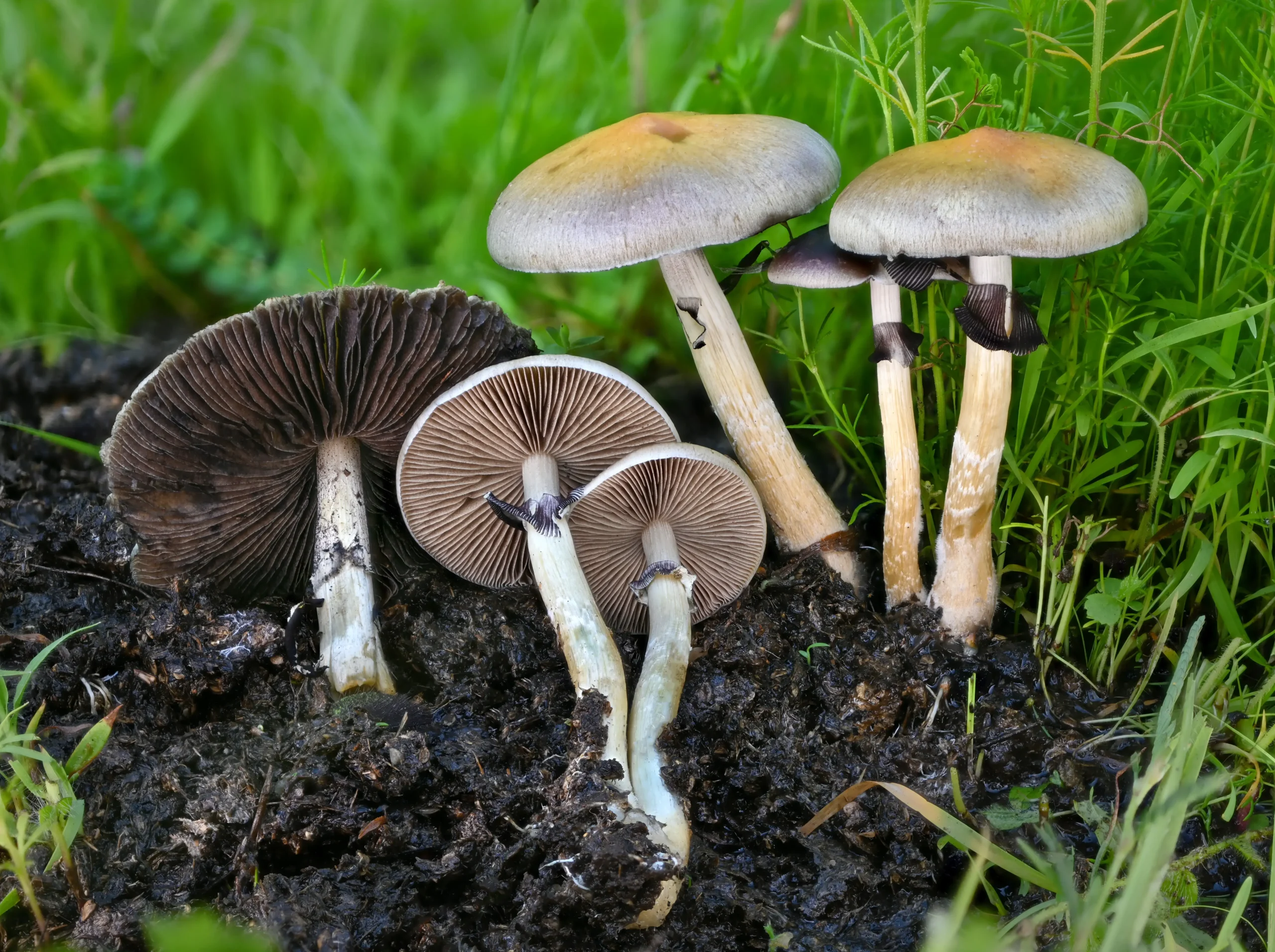
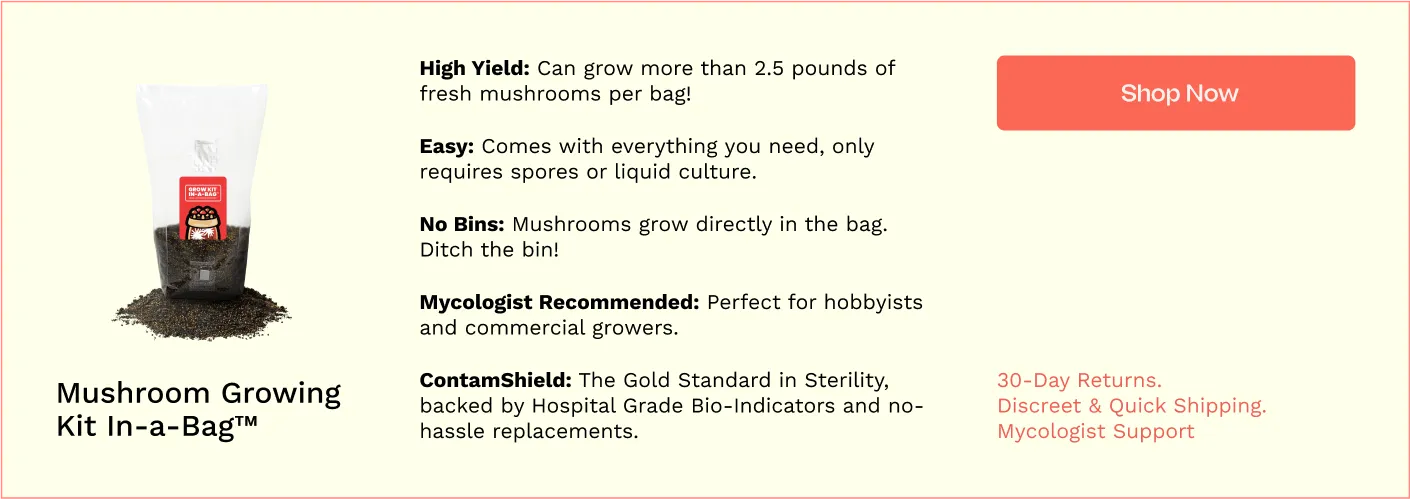
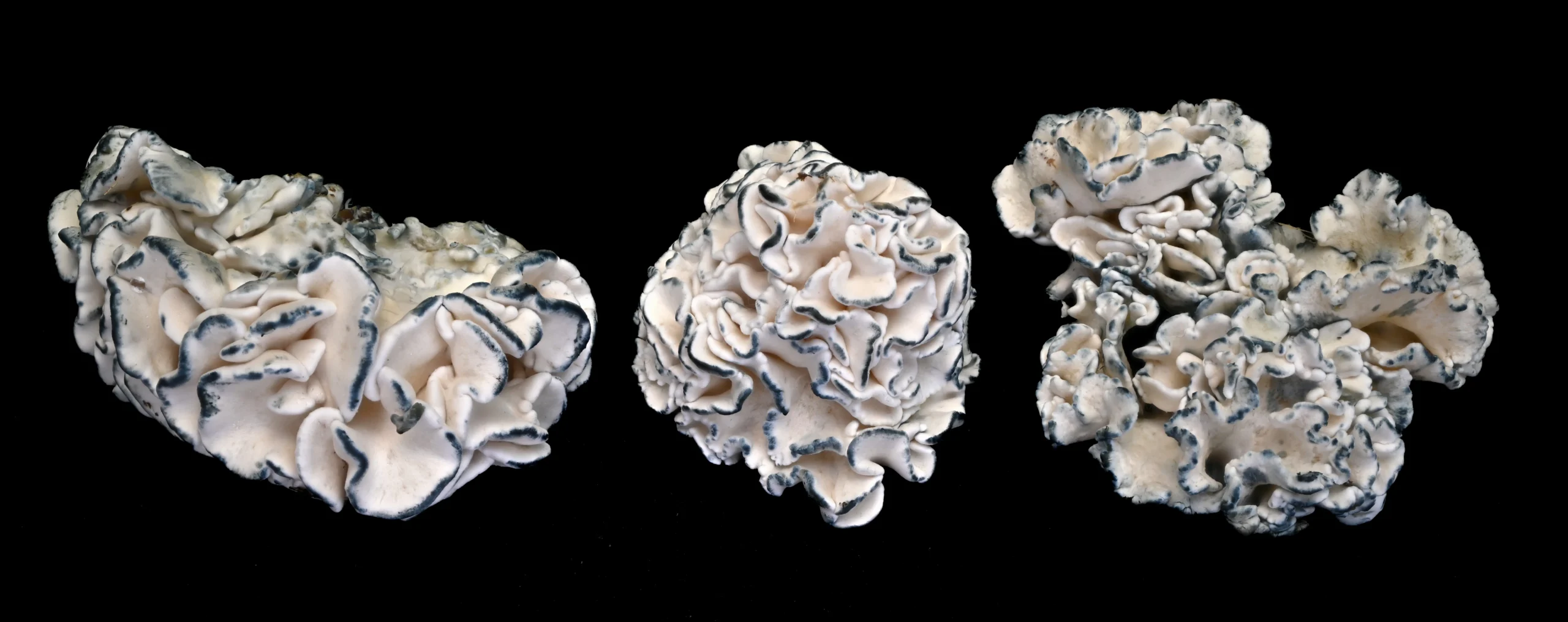
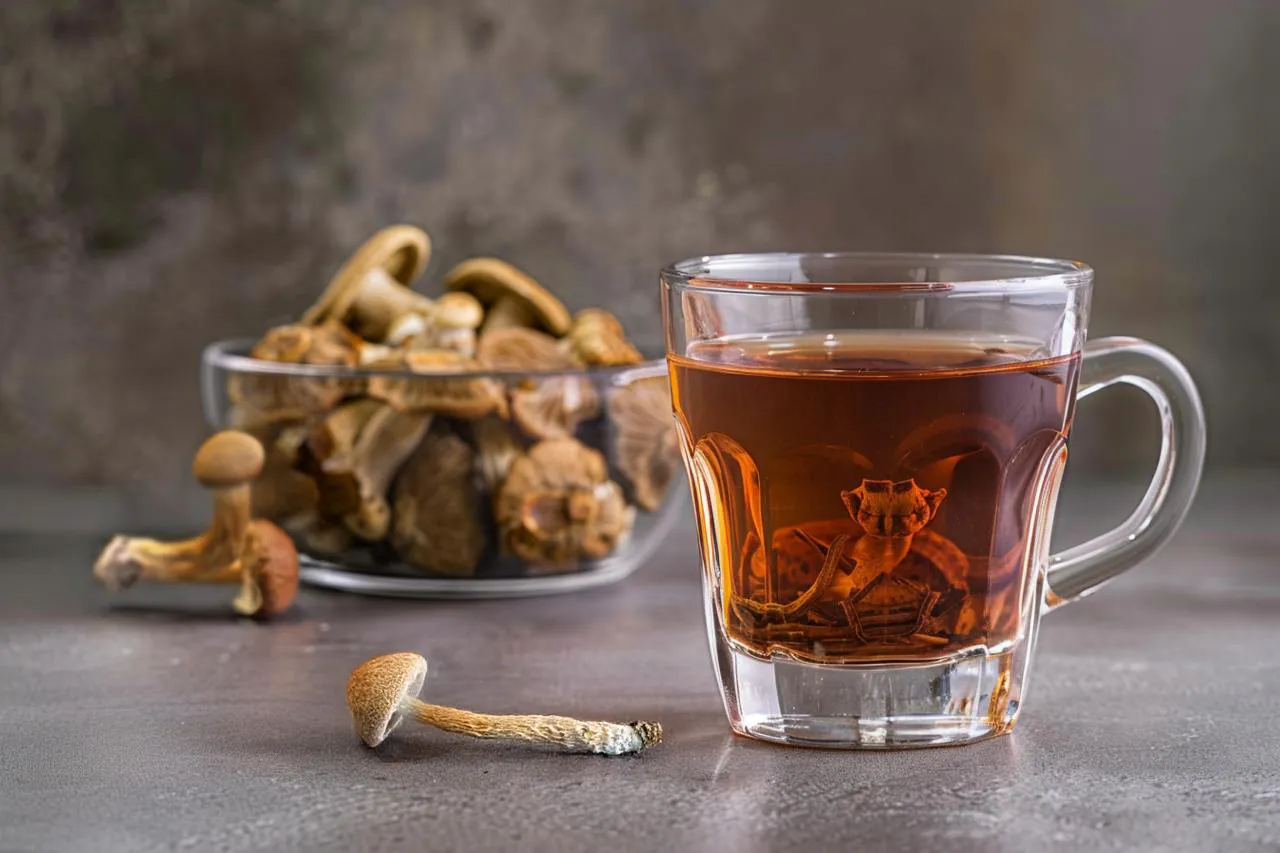
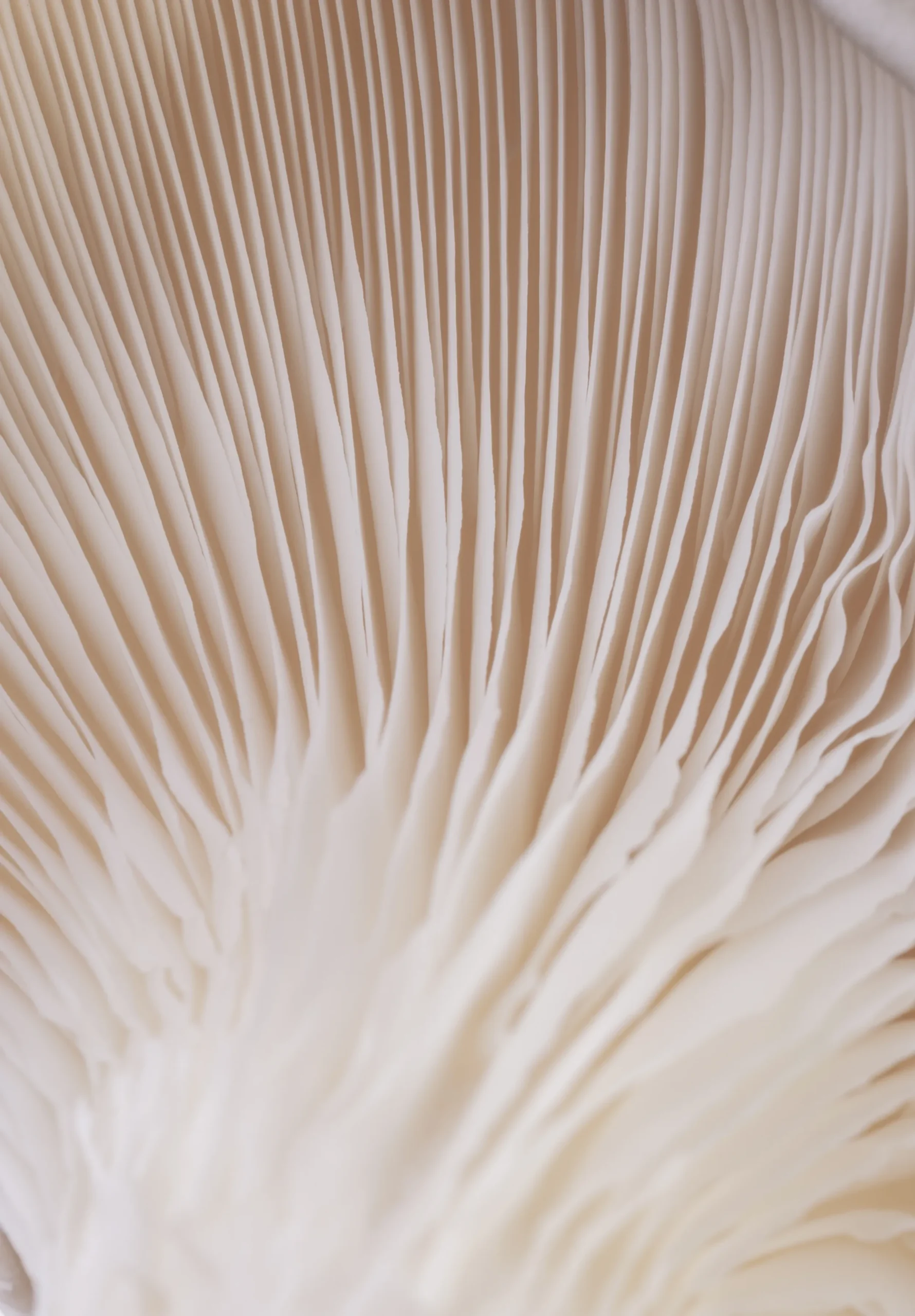
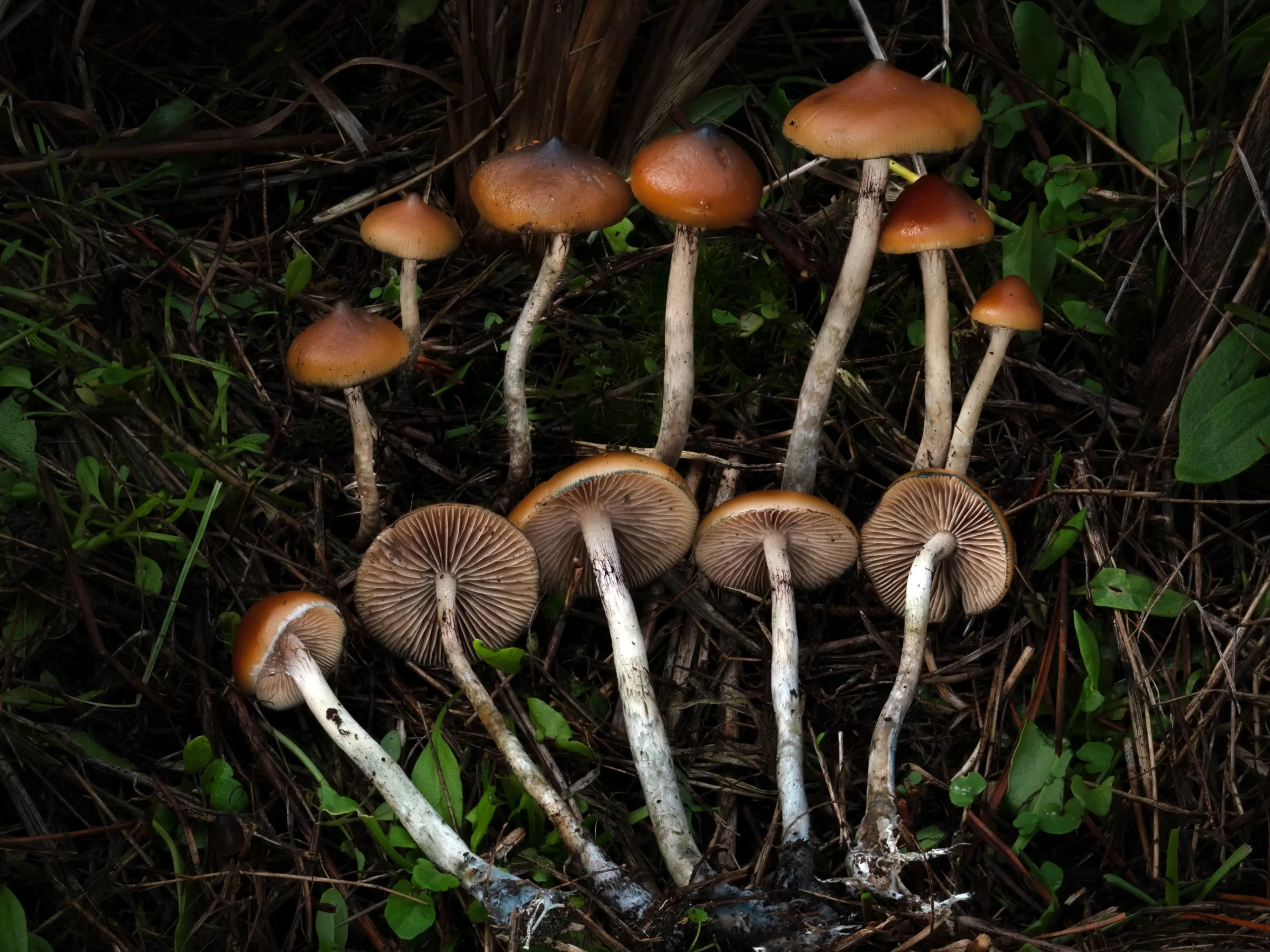
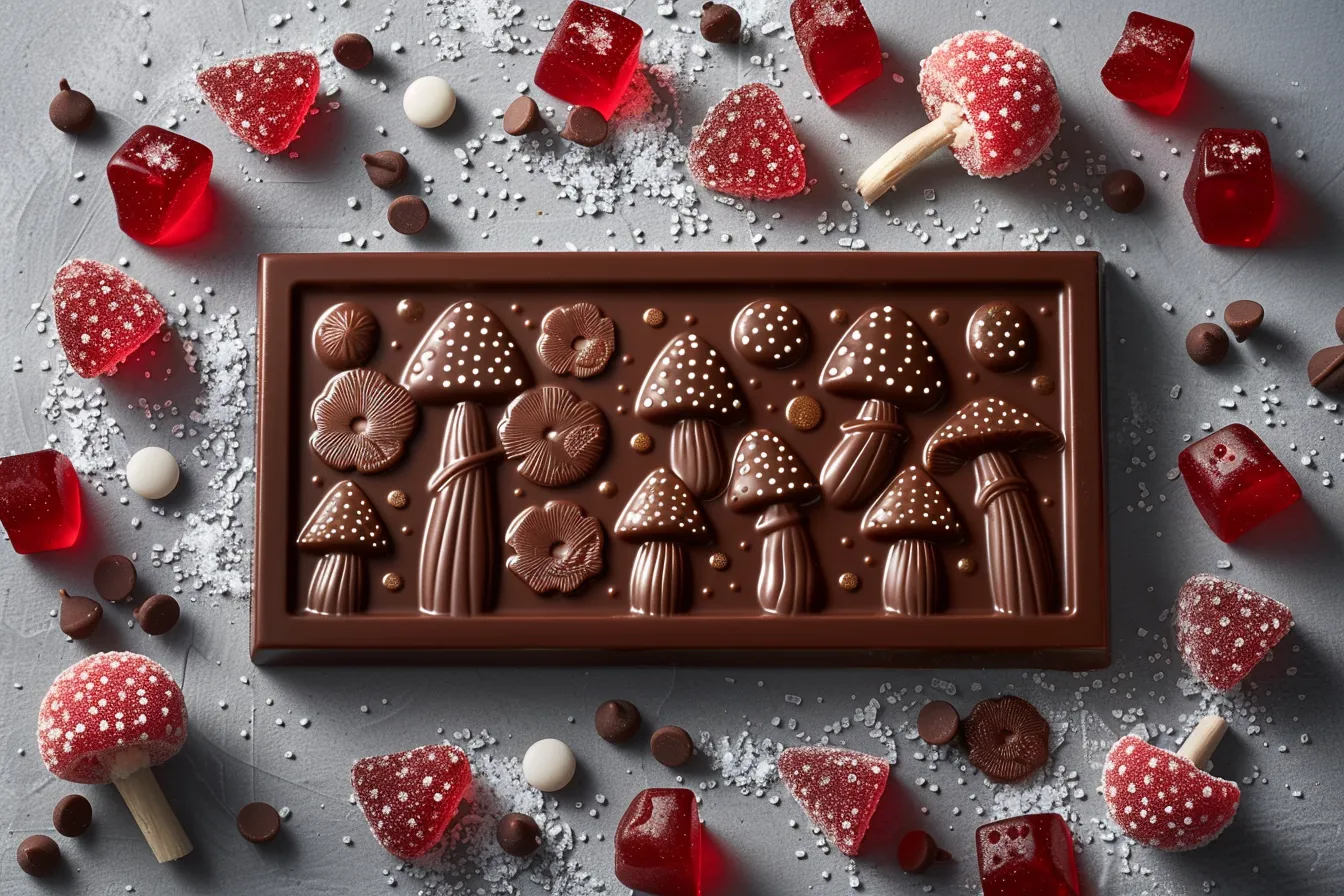
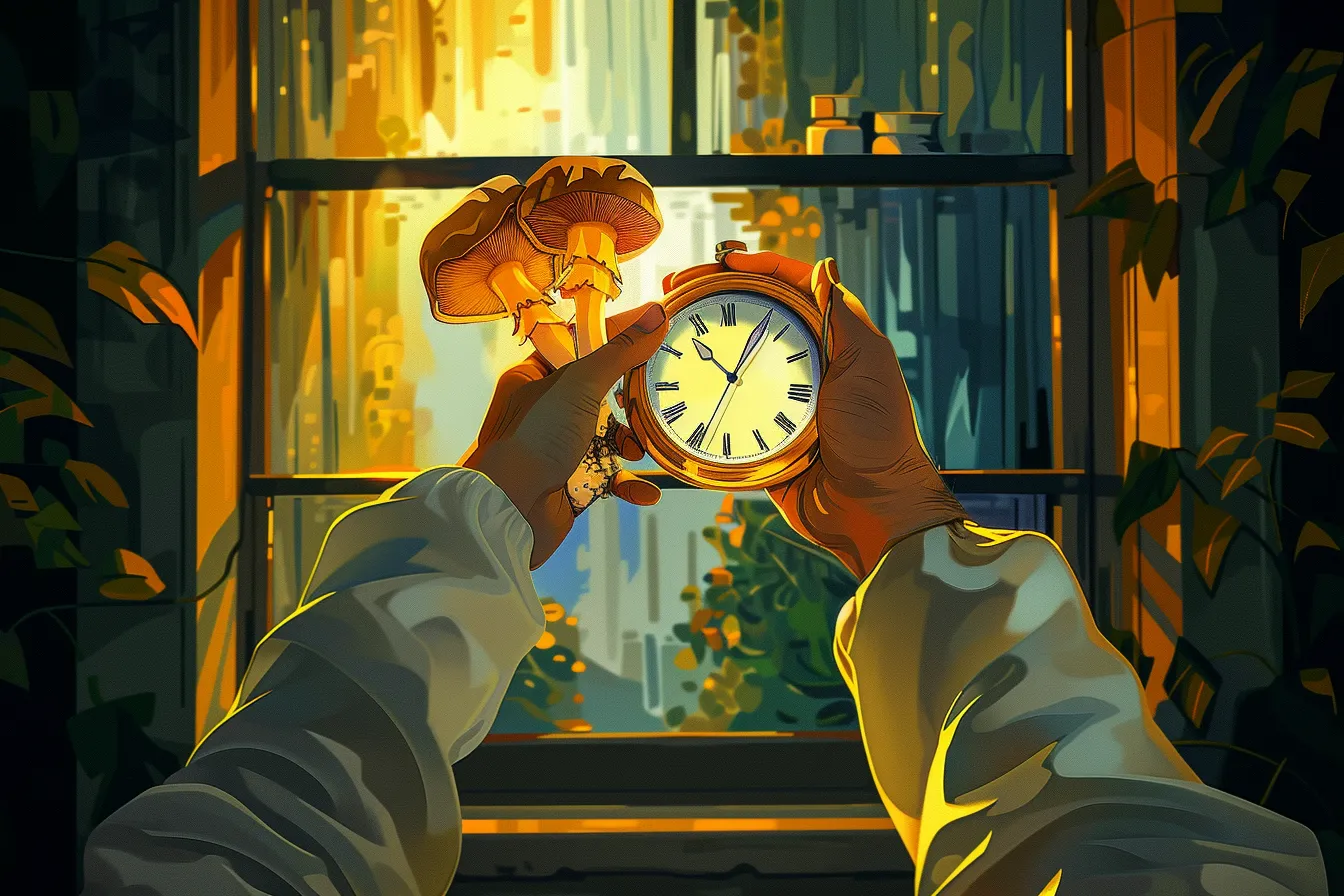
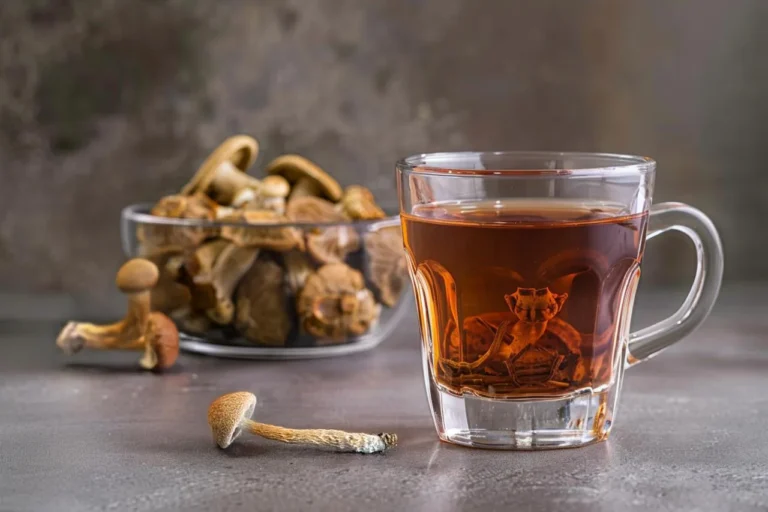
 David Connell
David Connell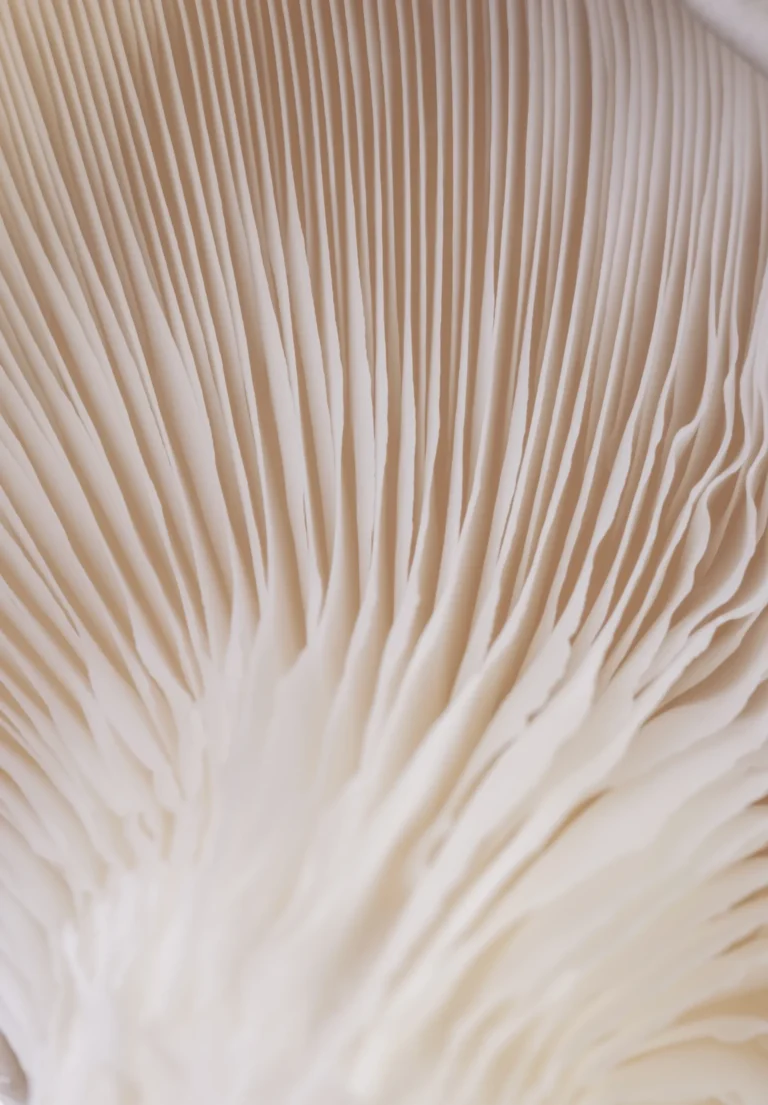
 Stephanie Karzon
Stephanie Karzon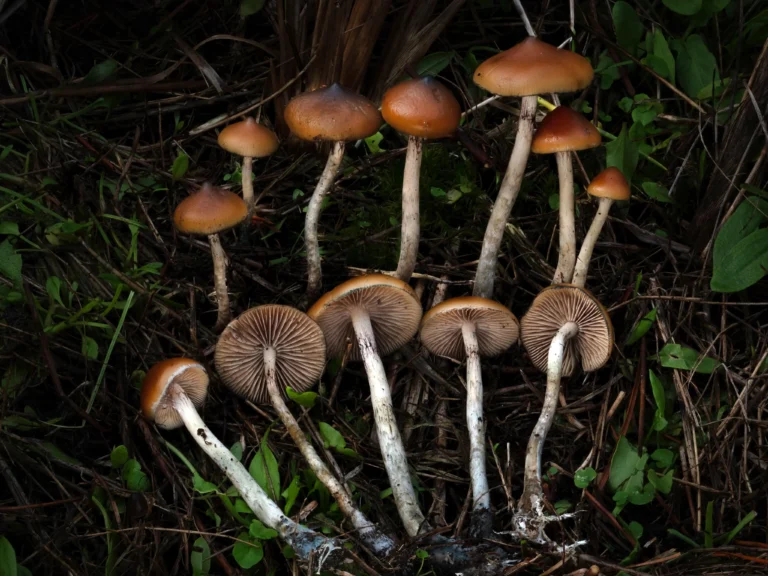
 James Conway
James Conway